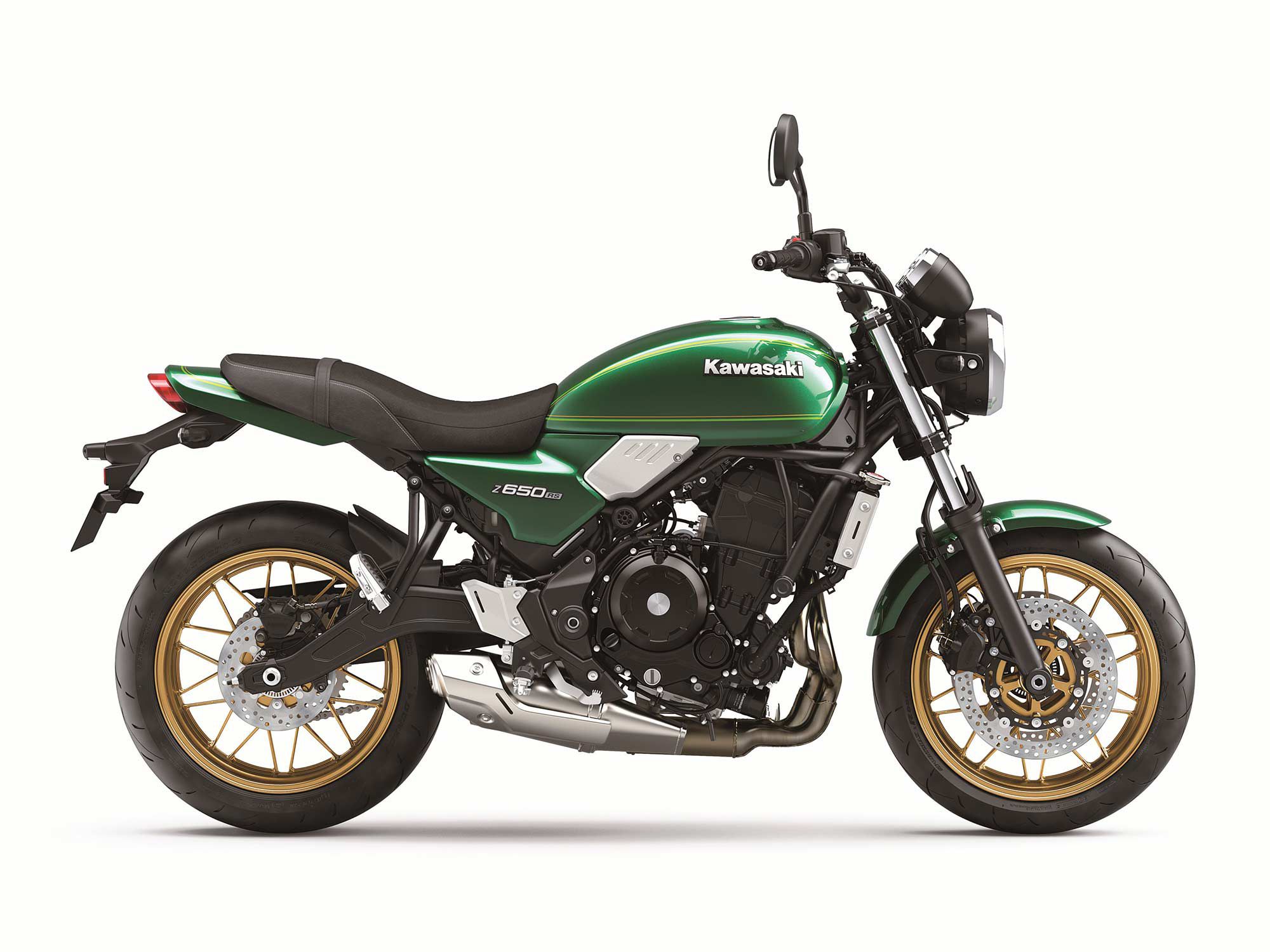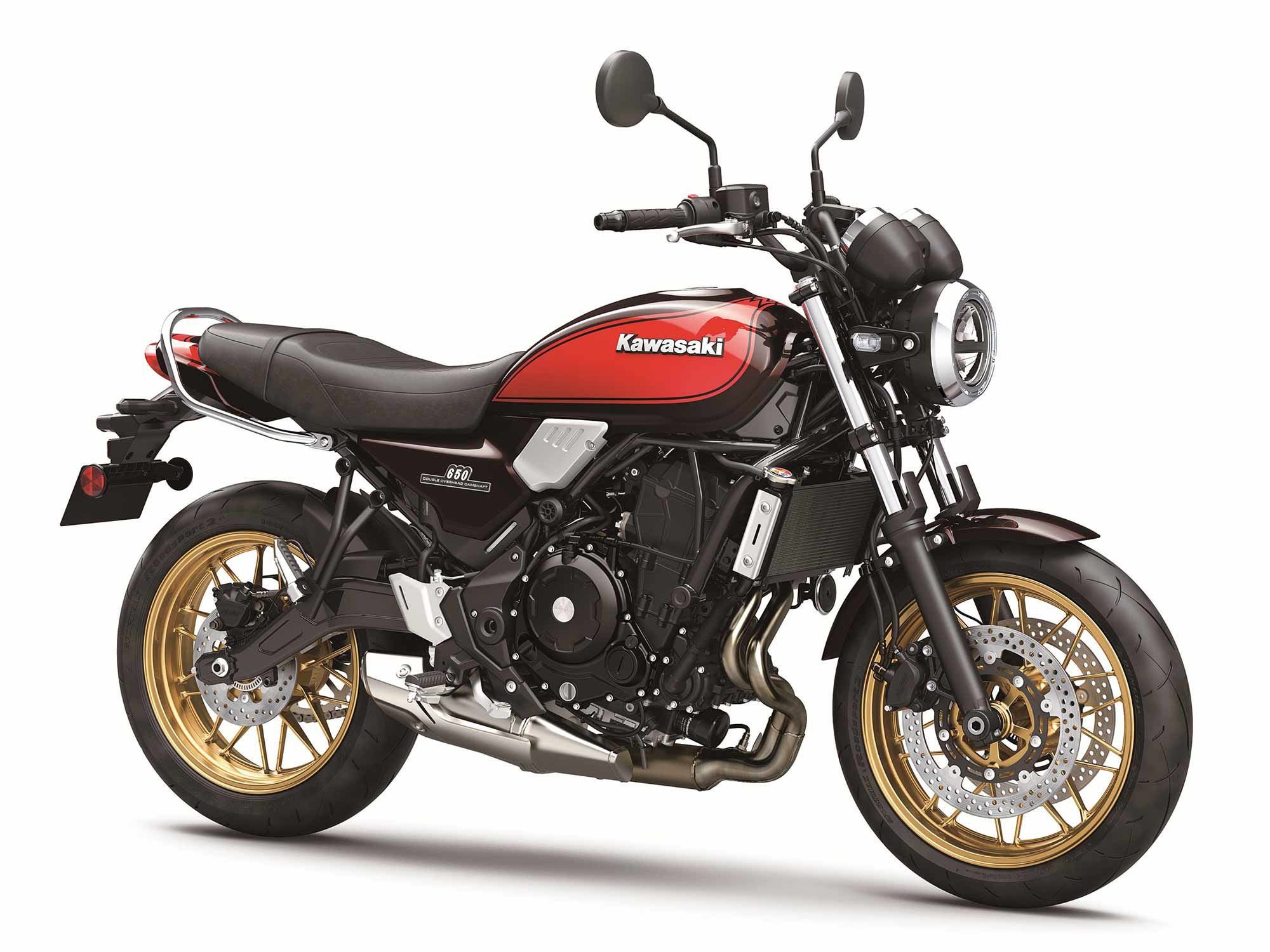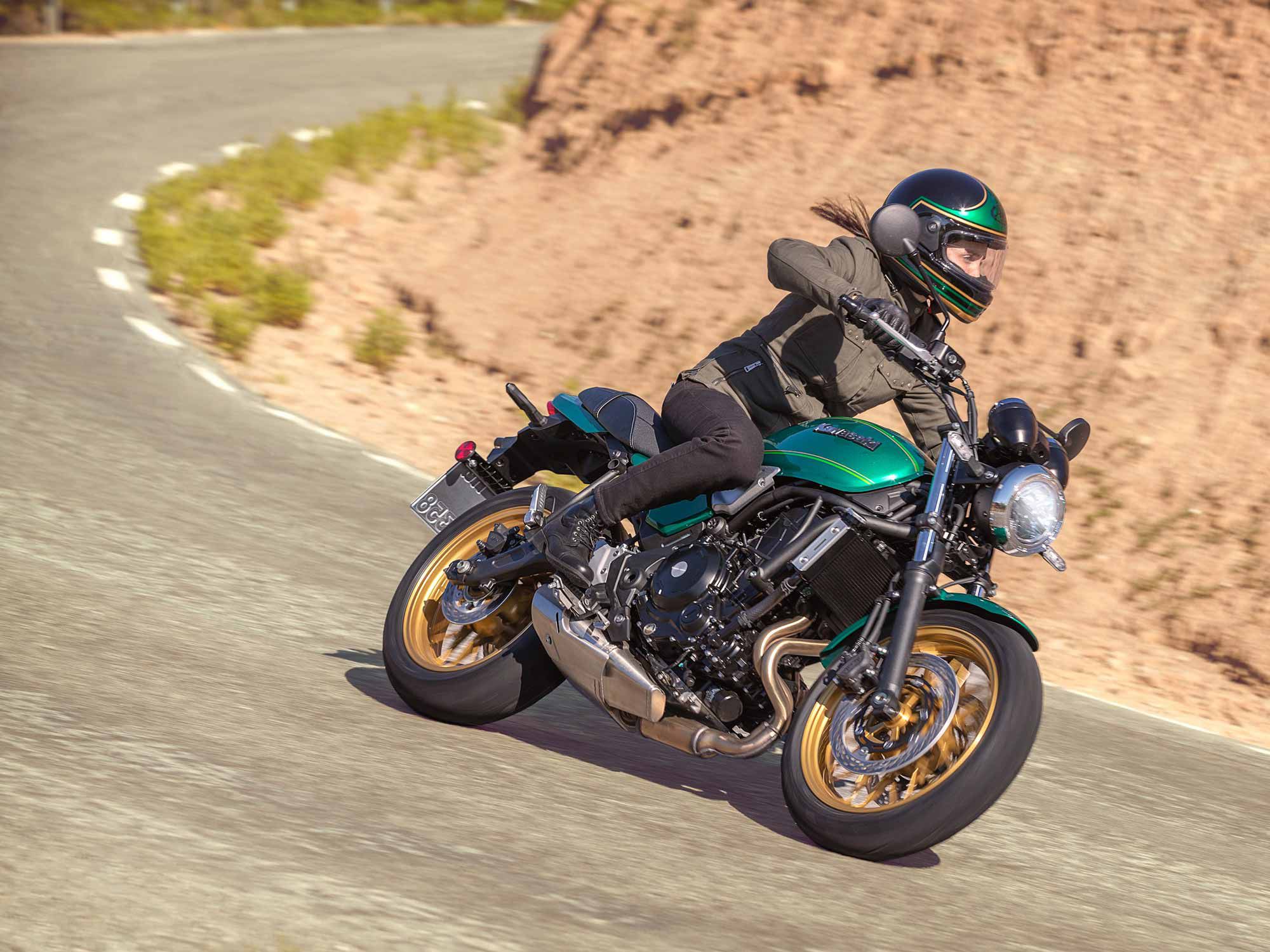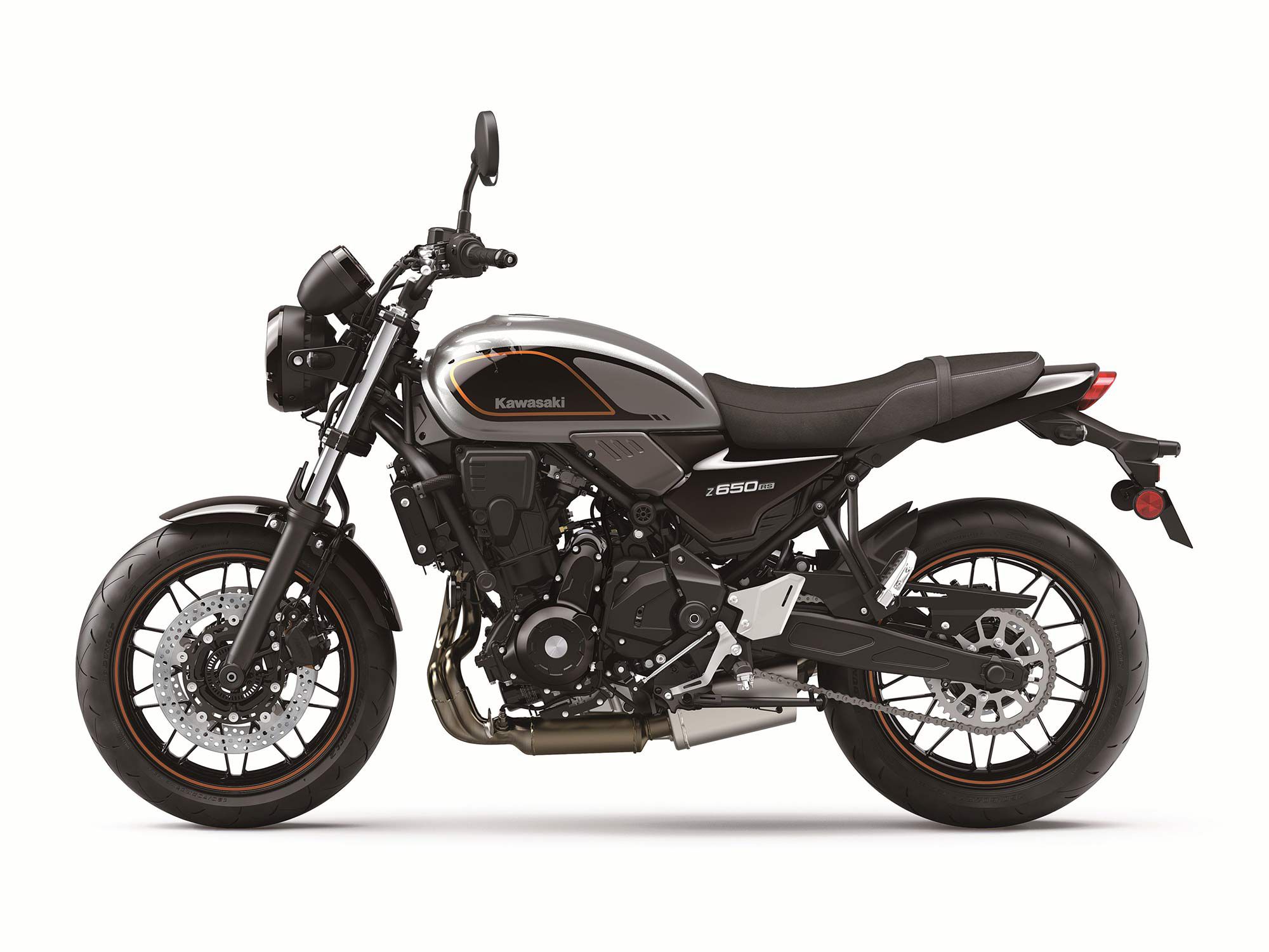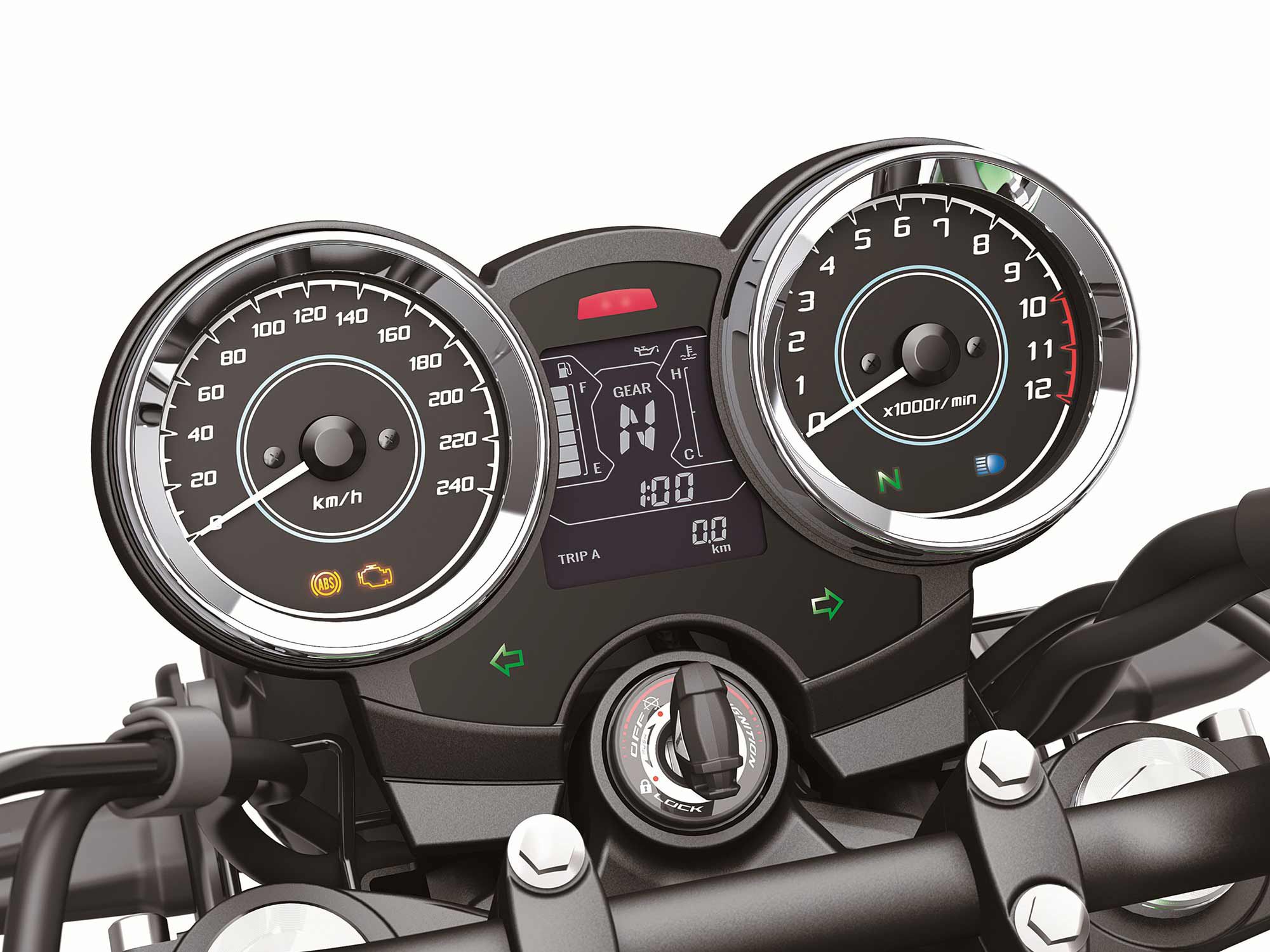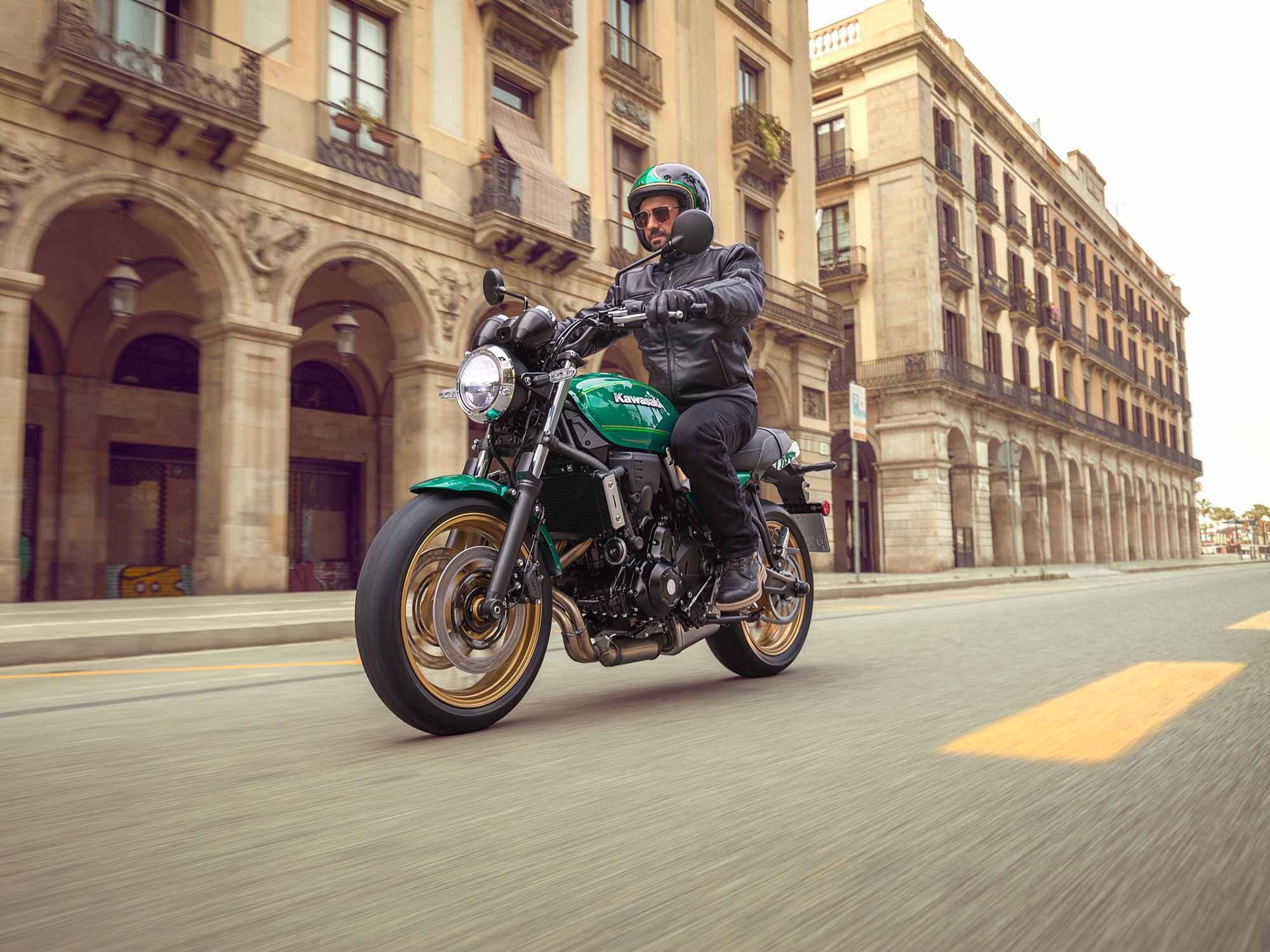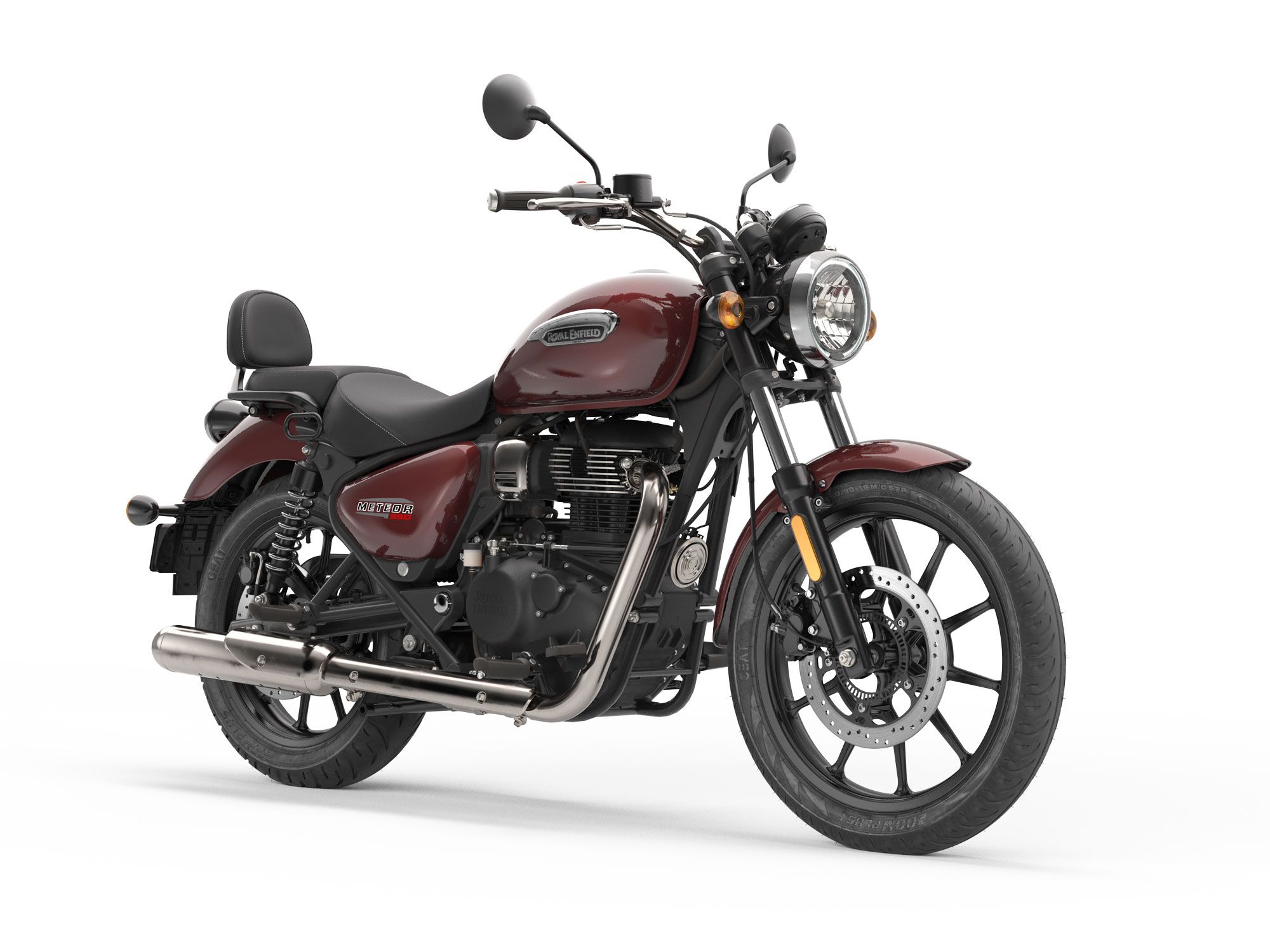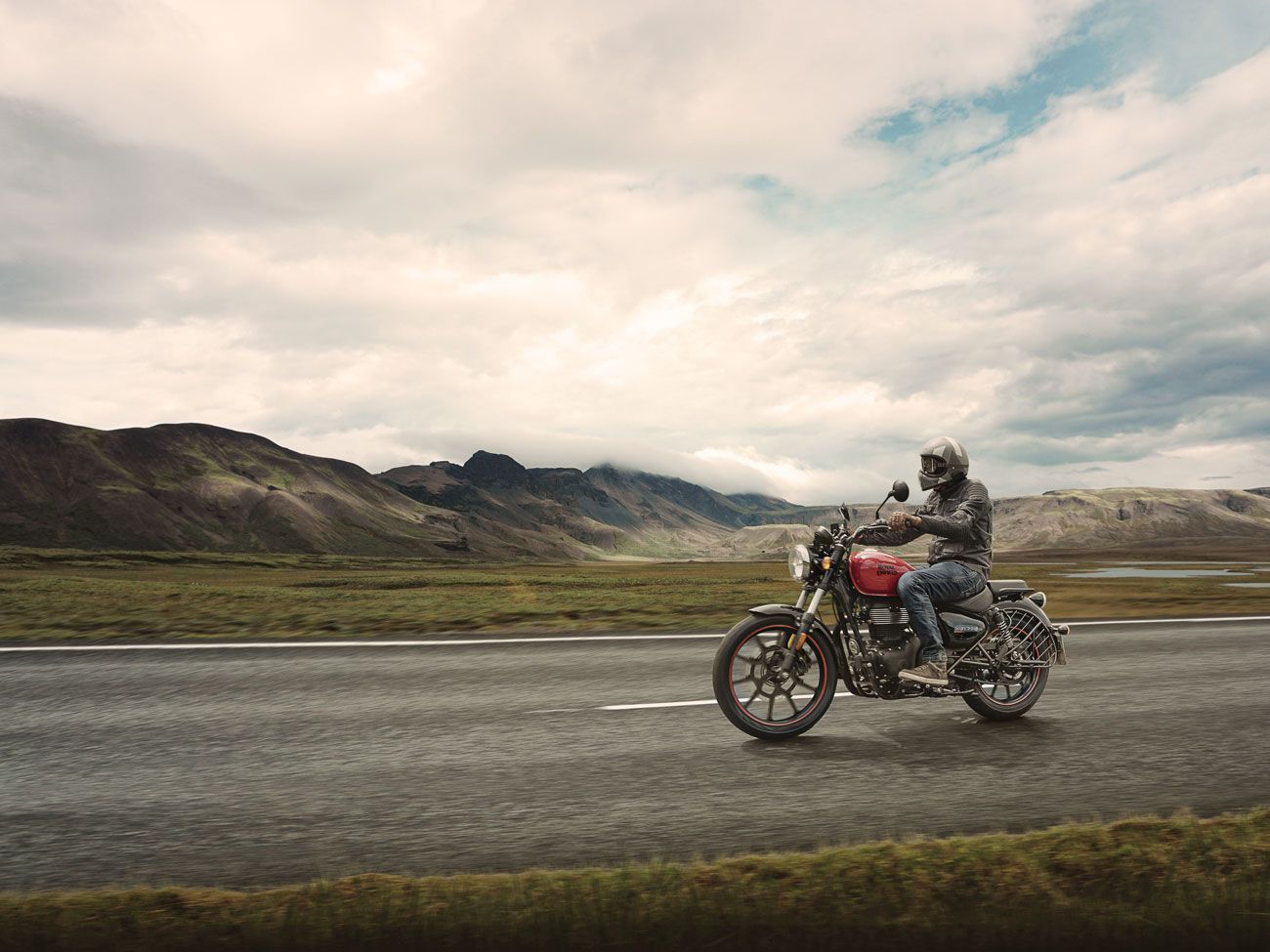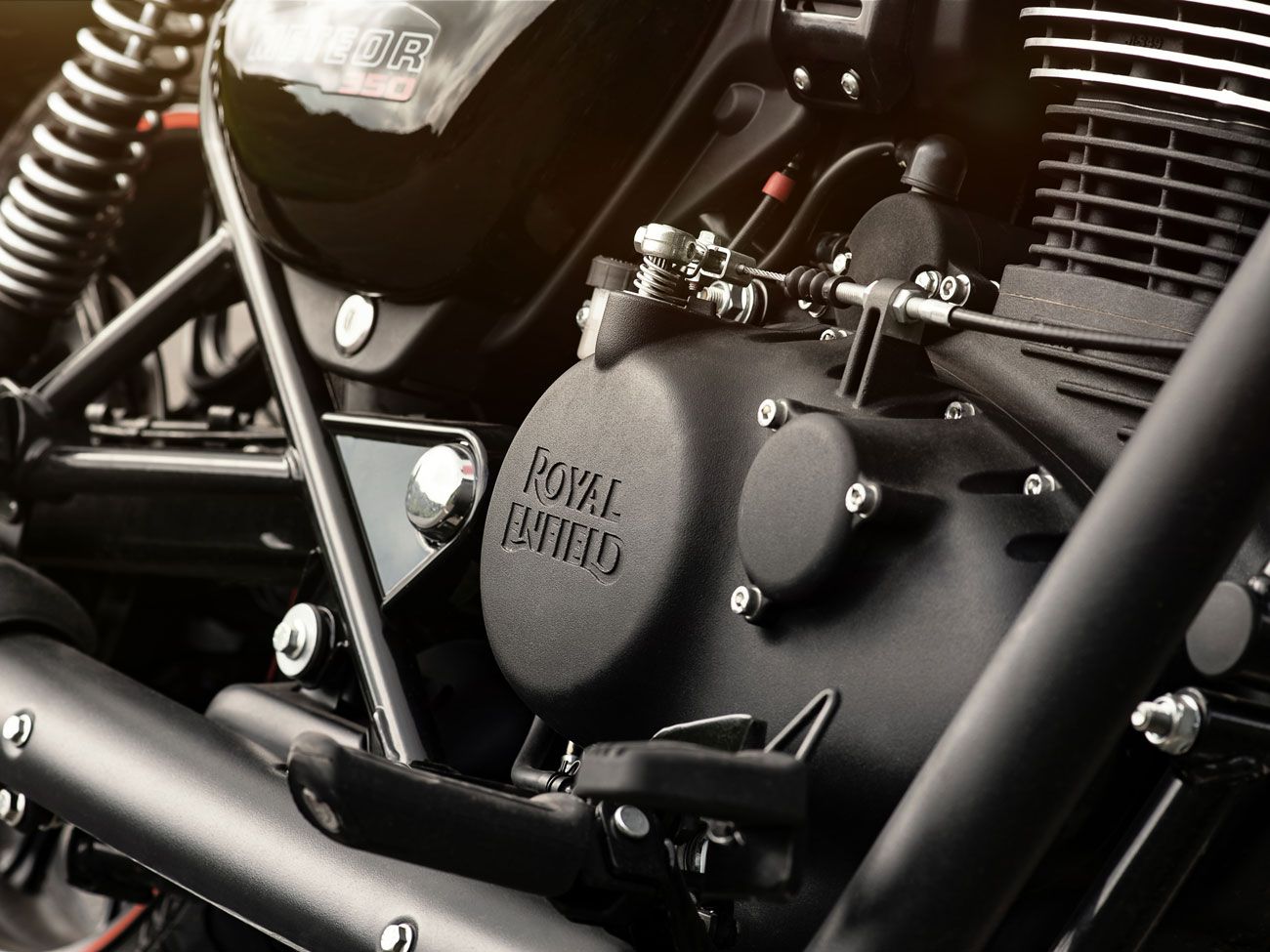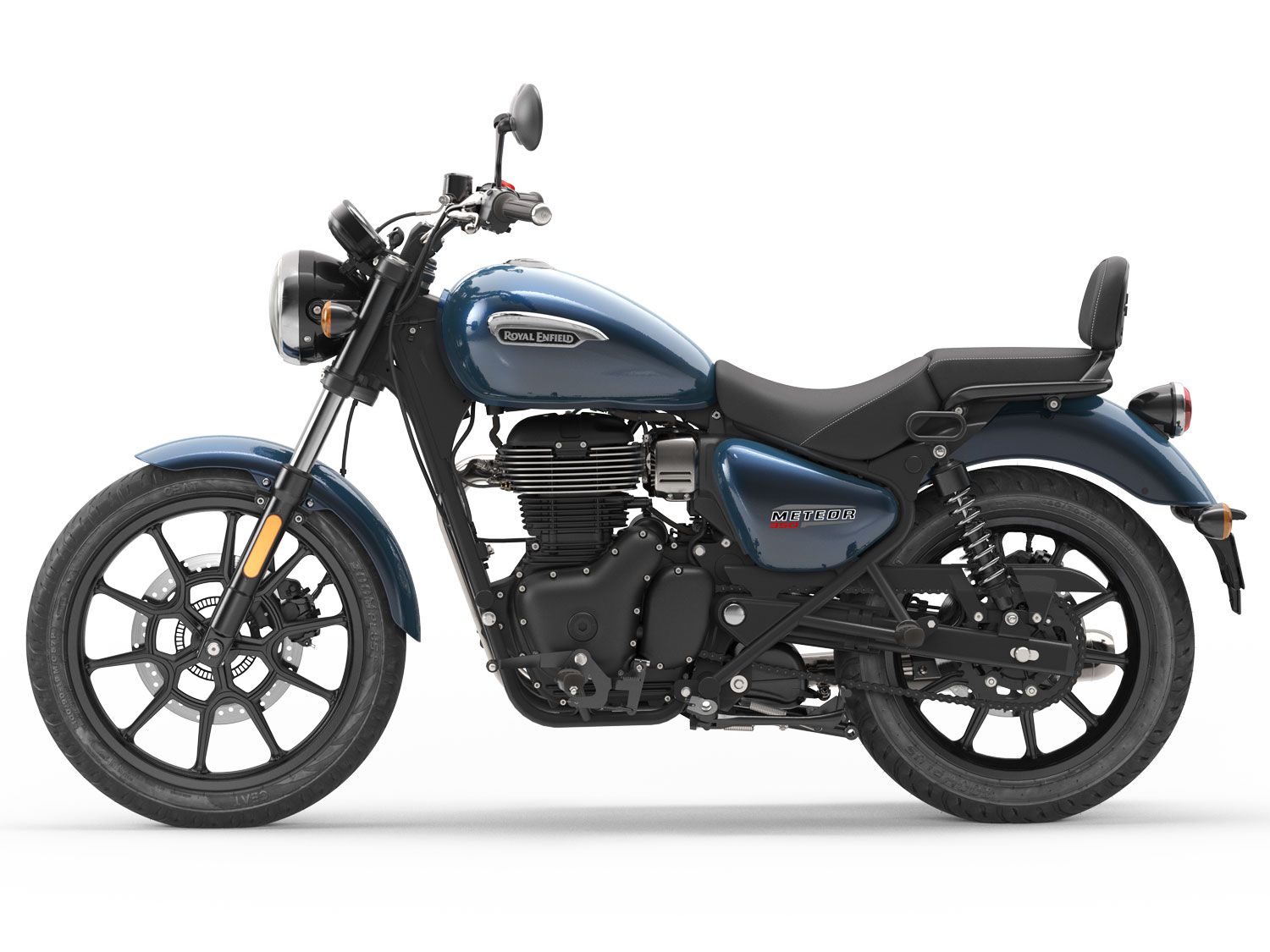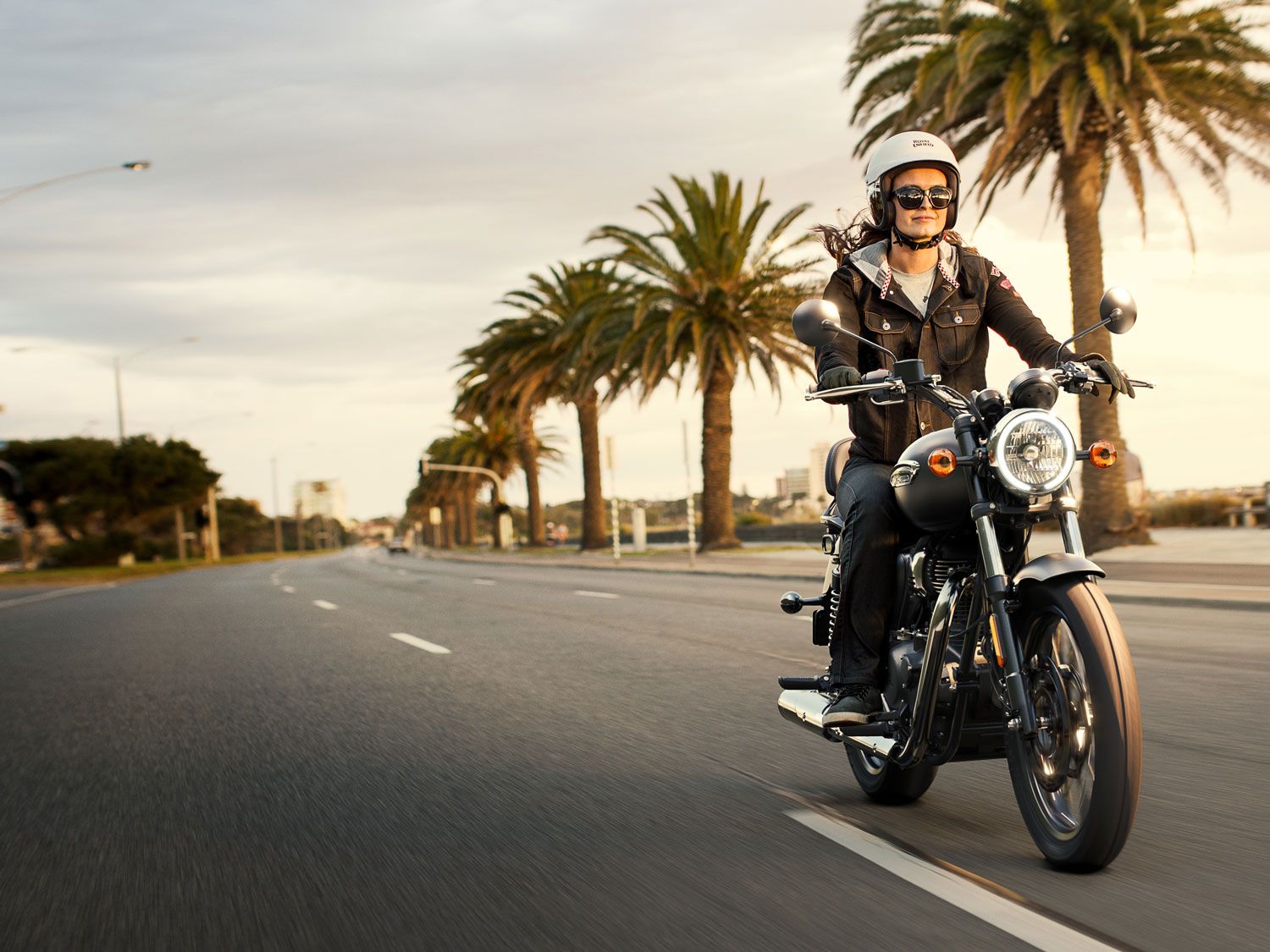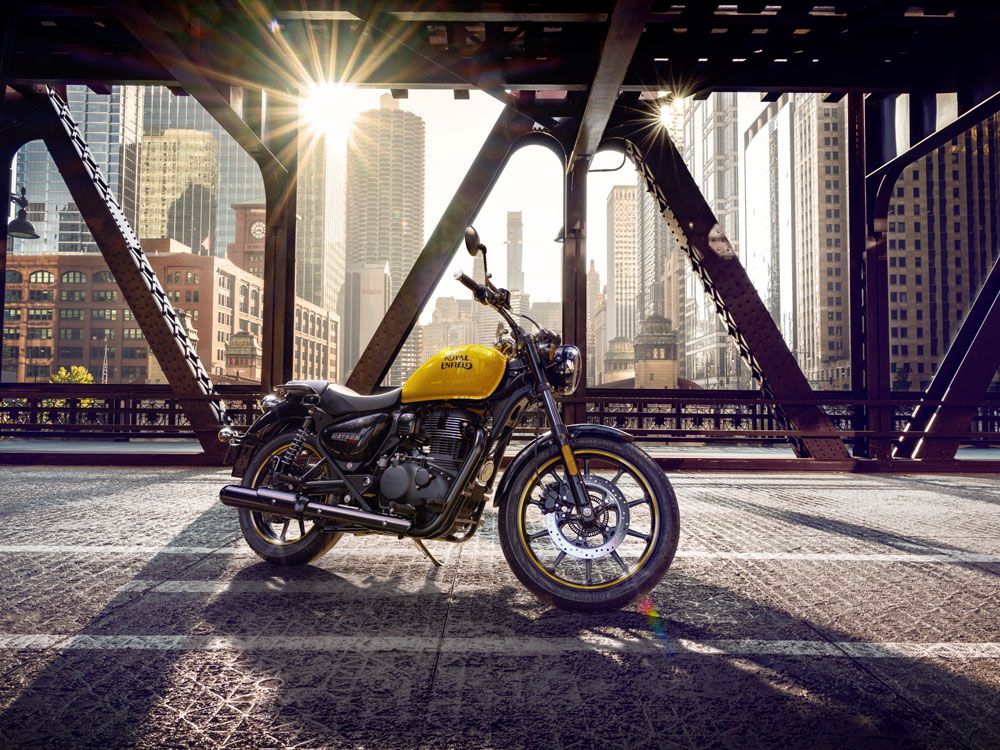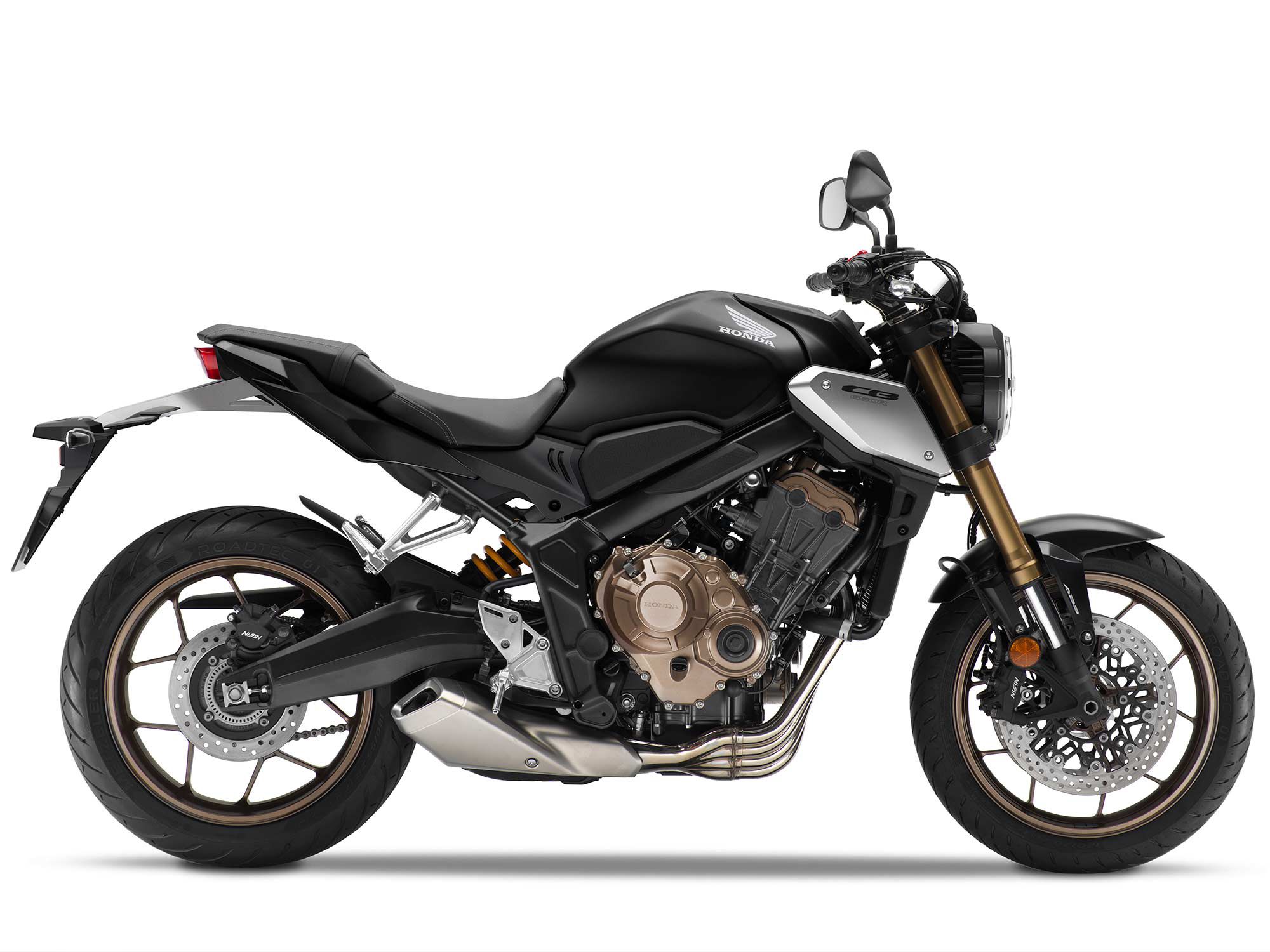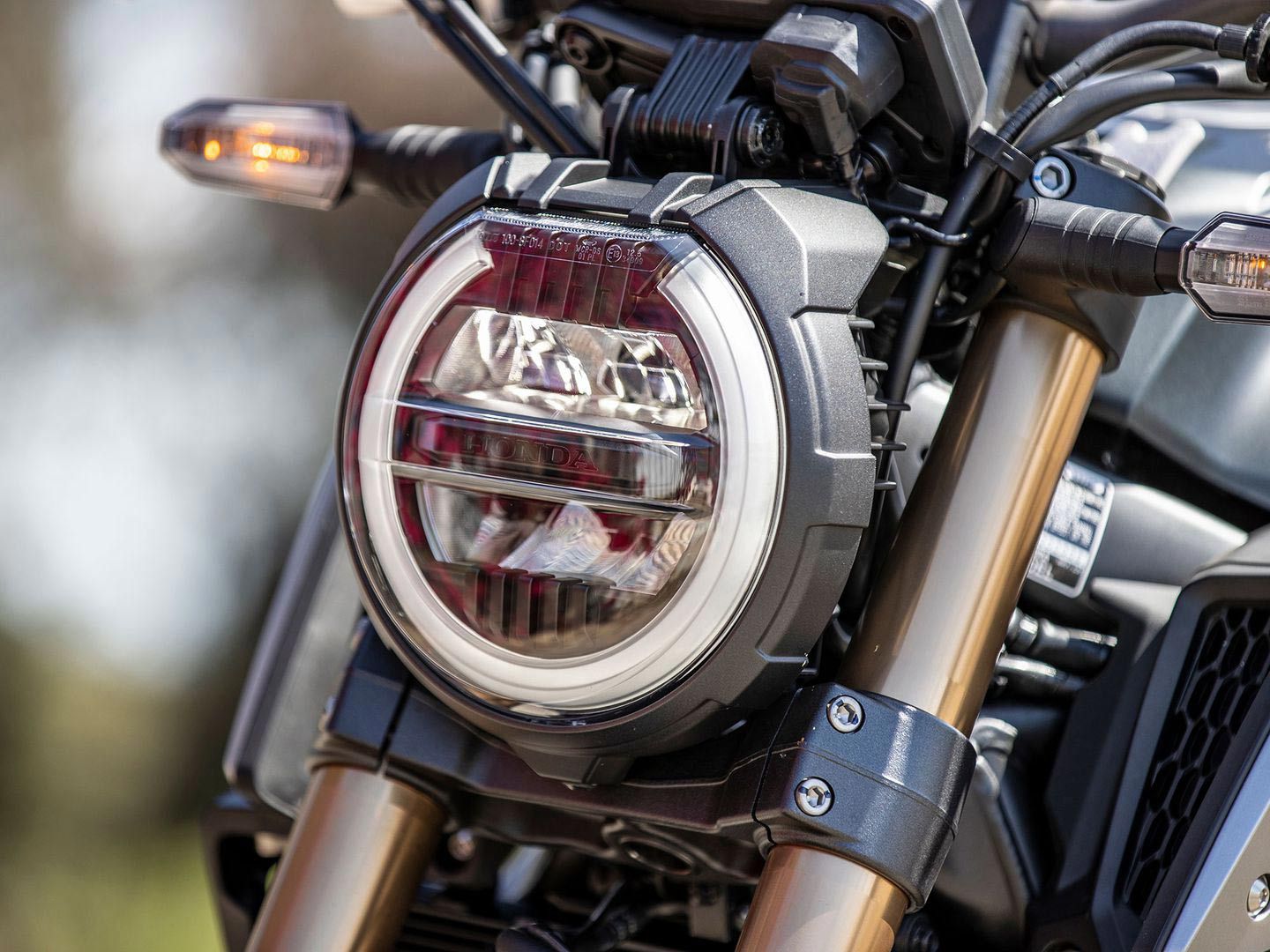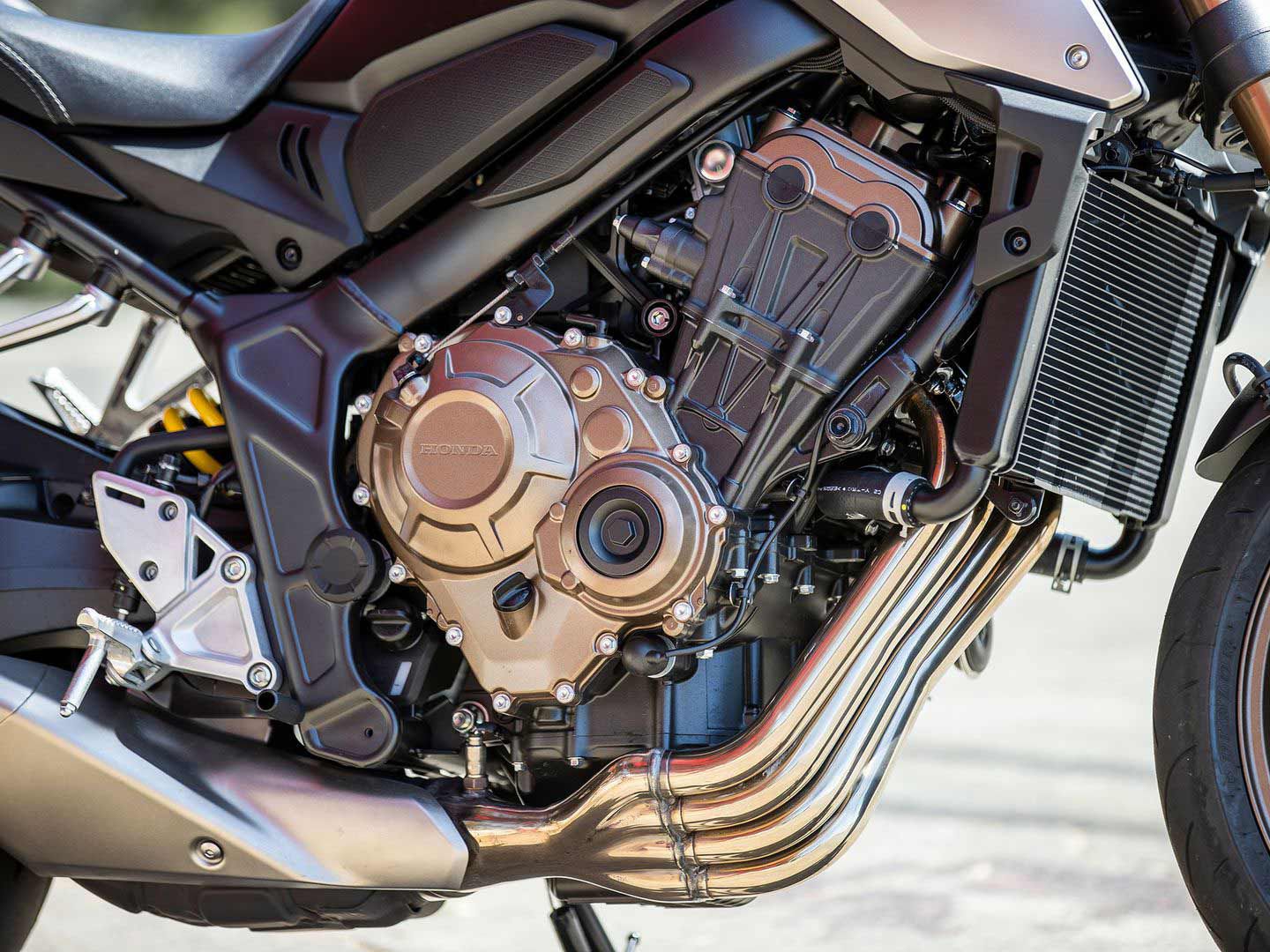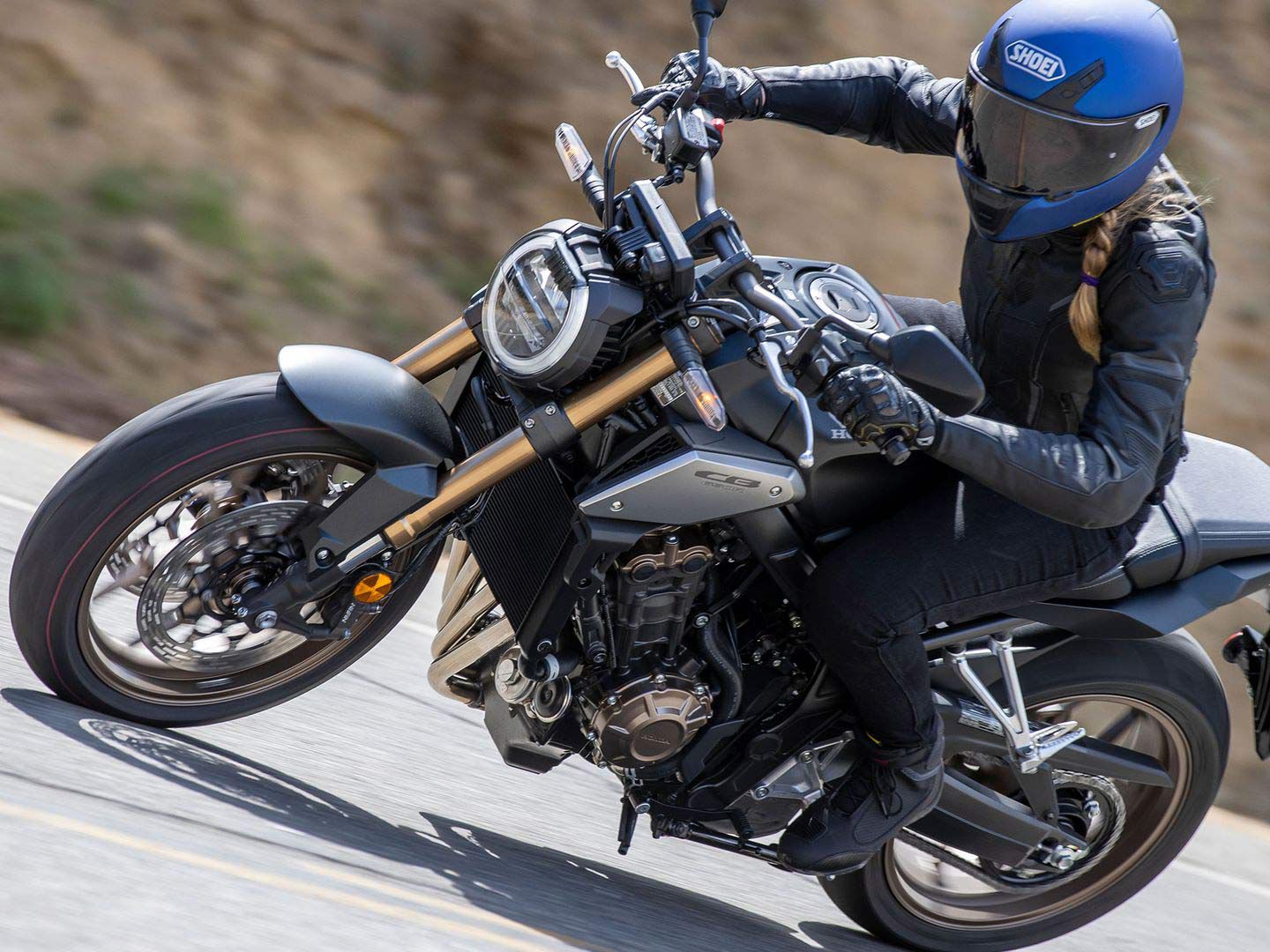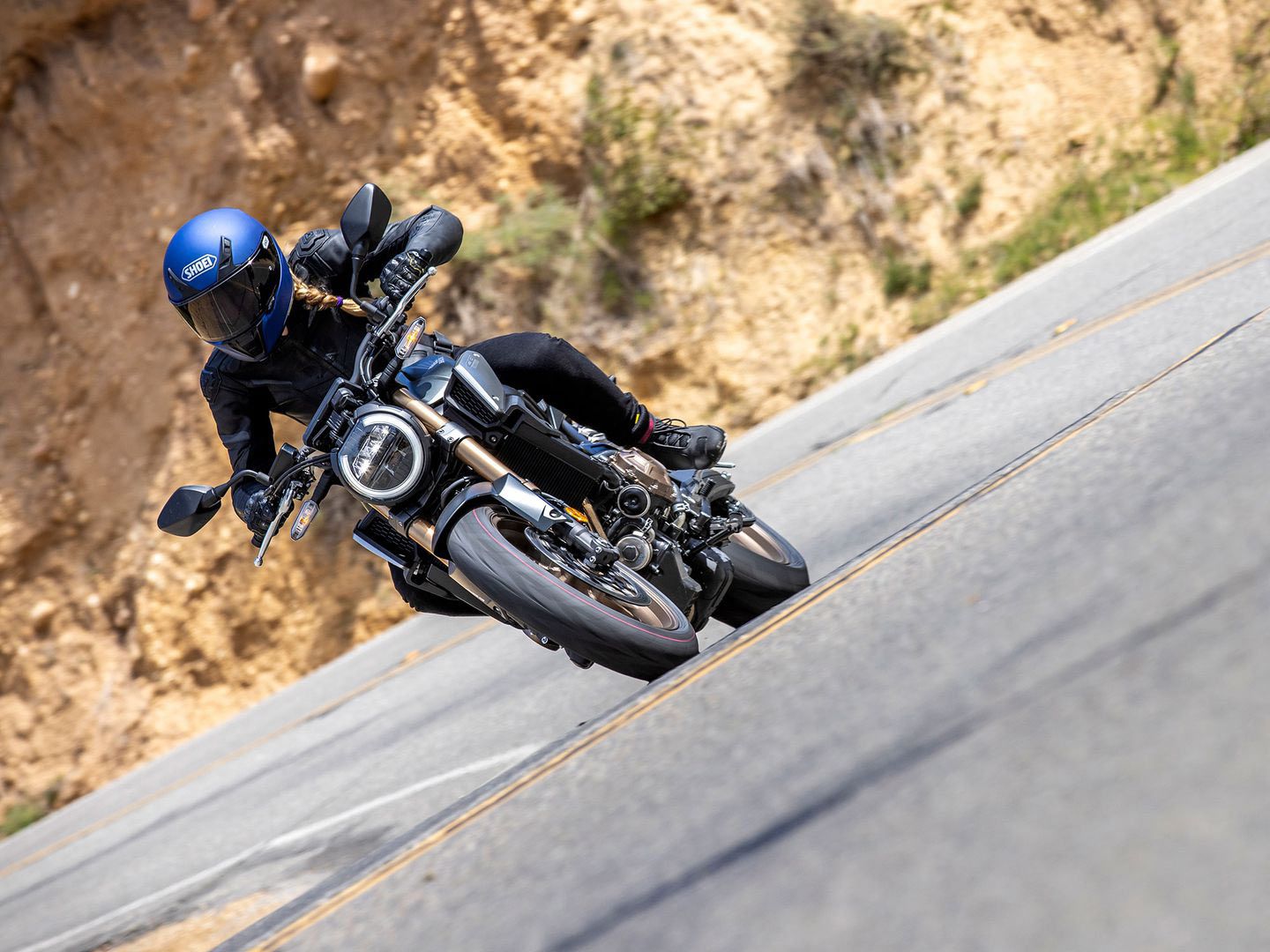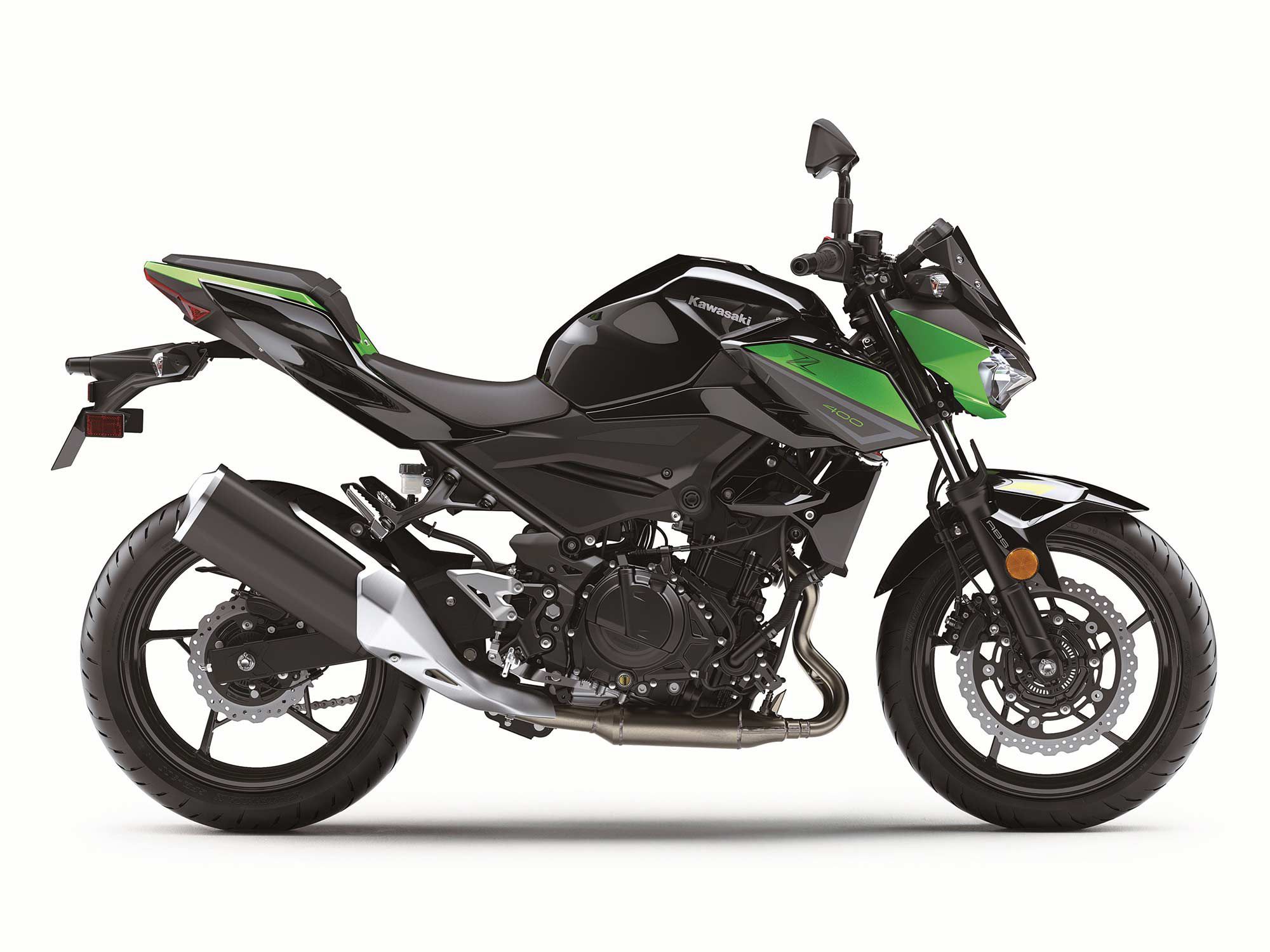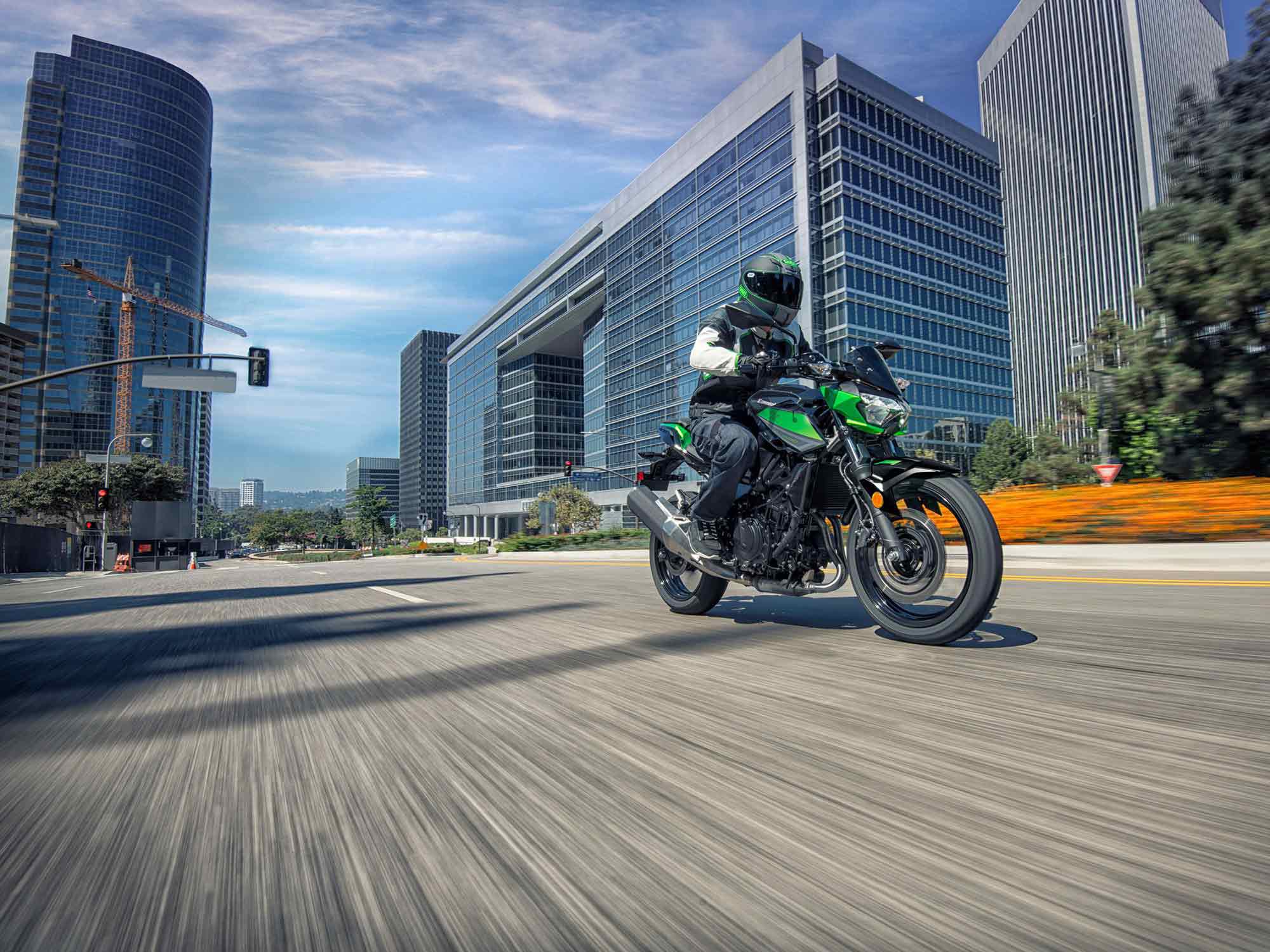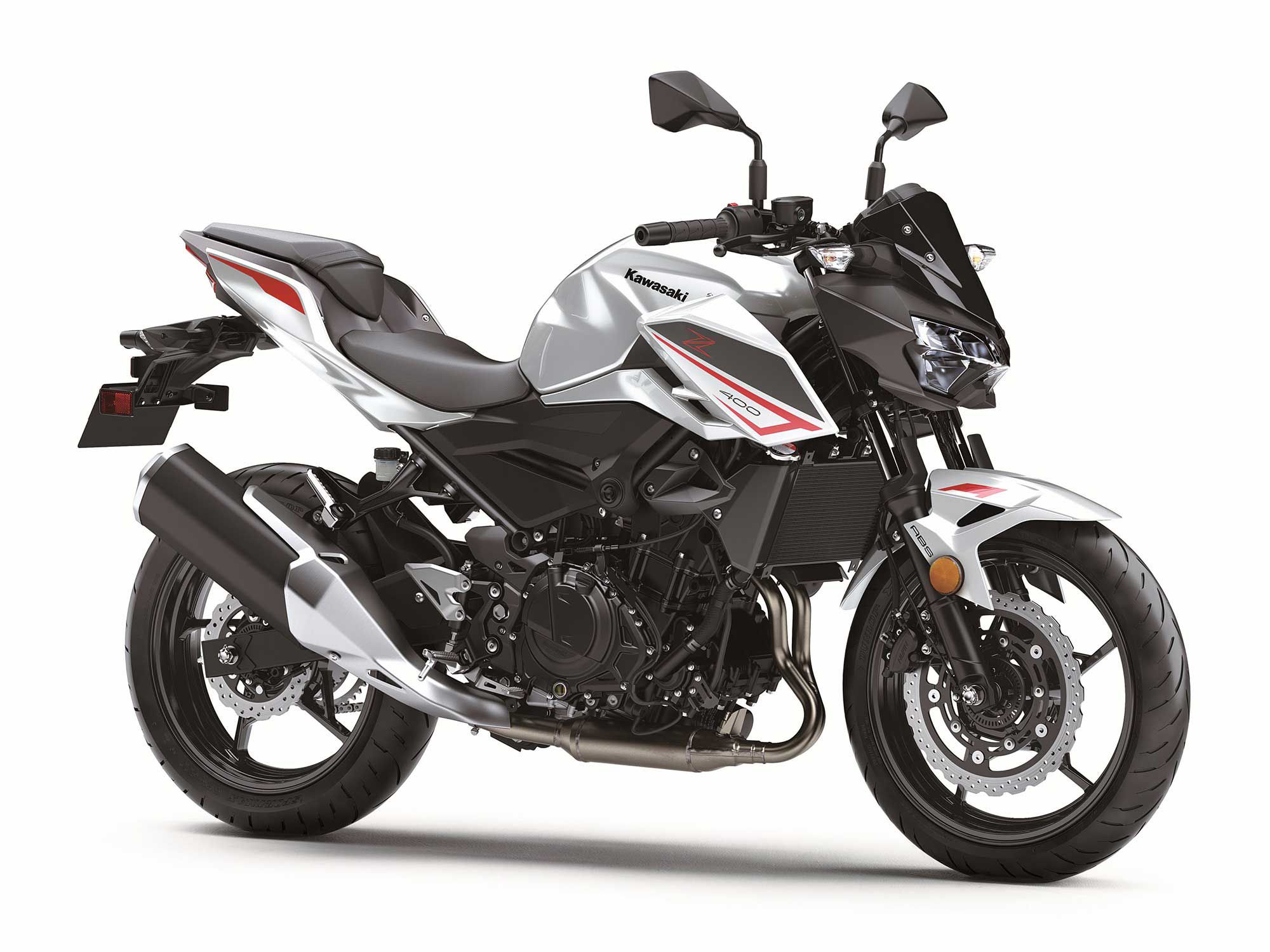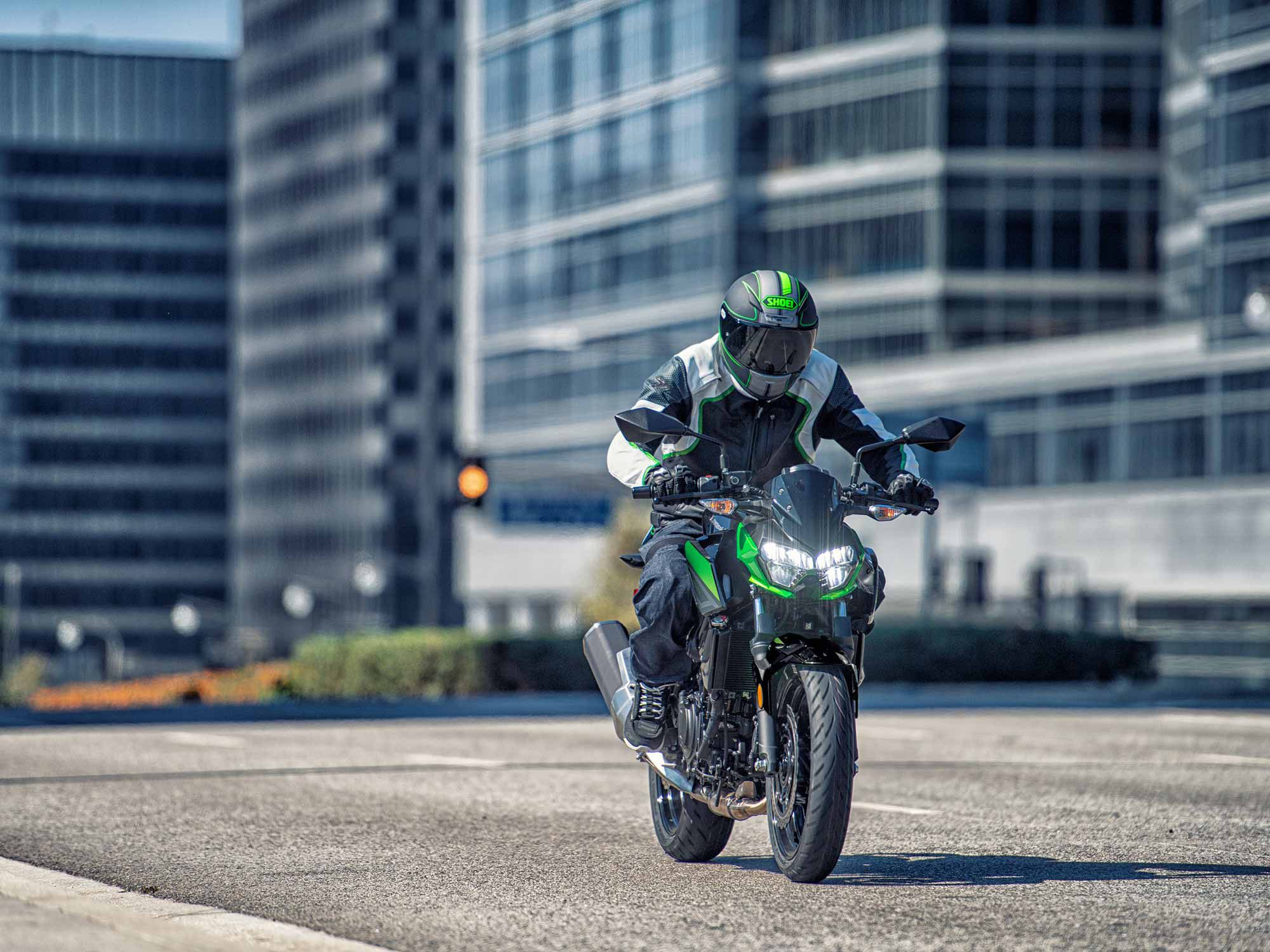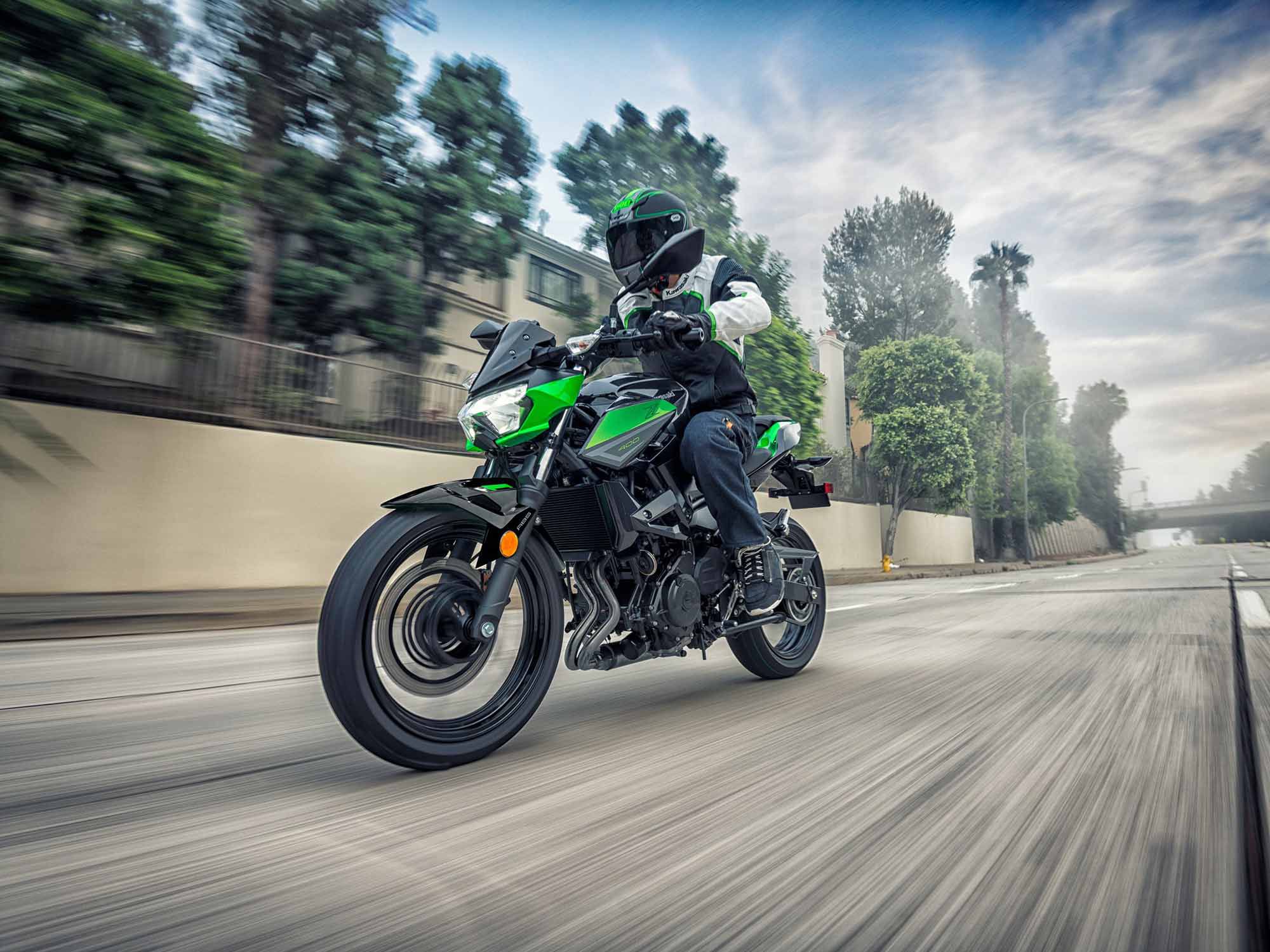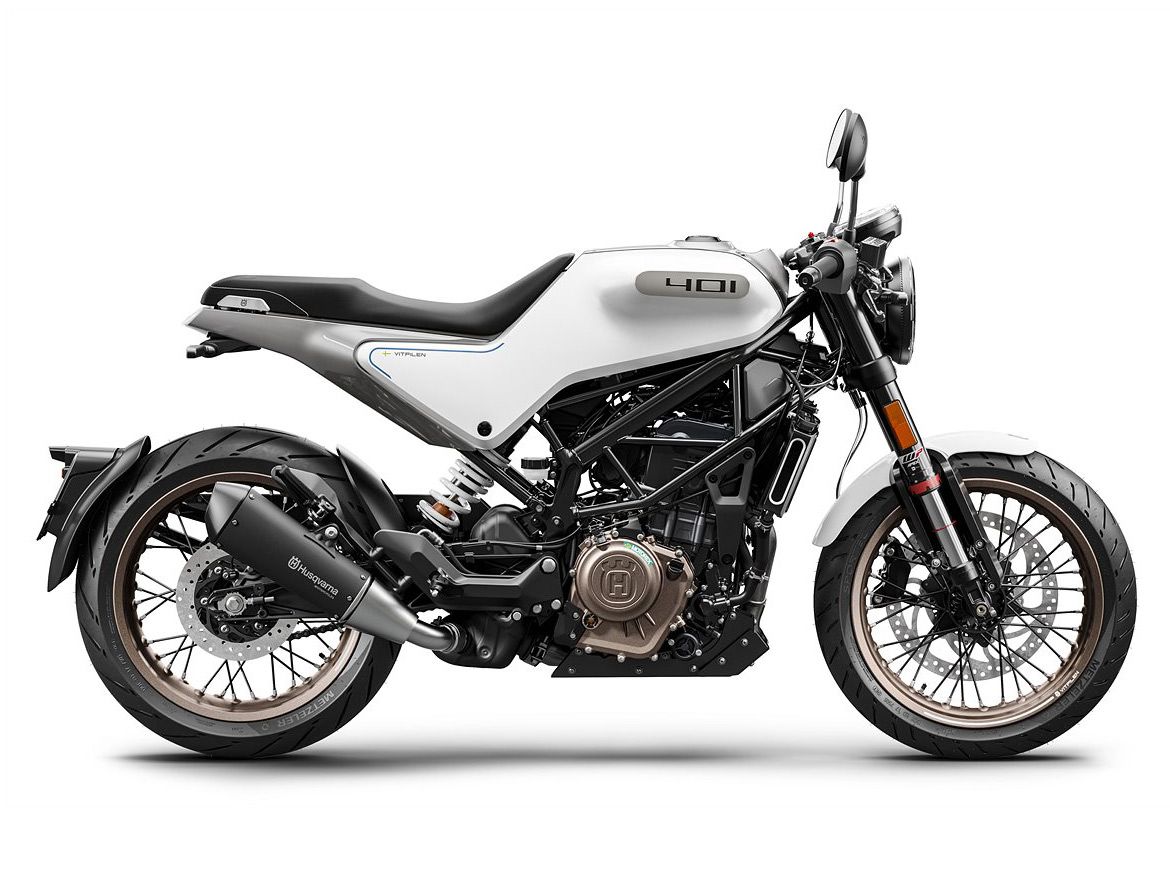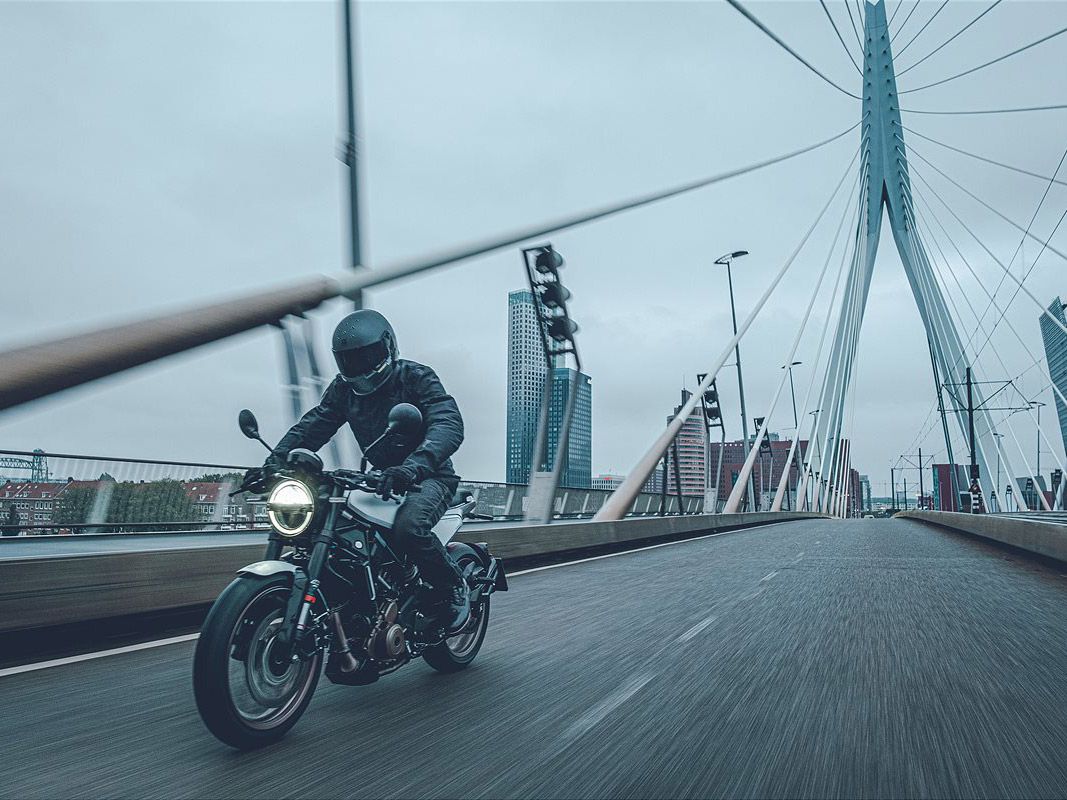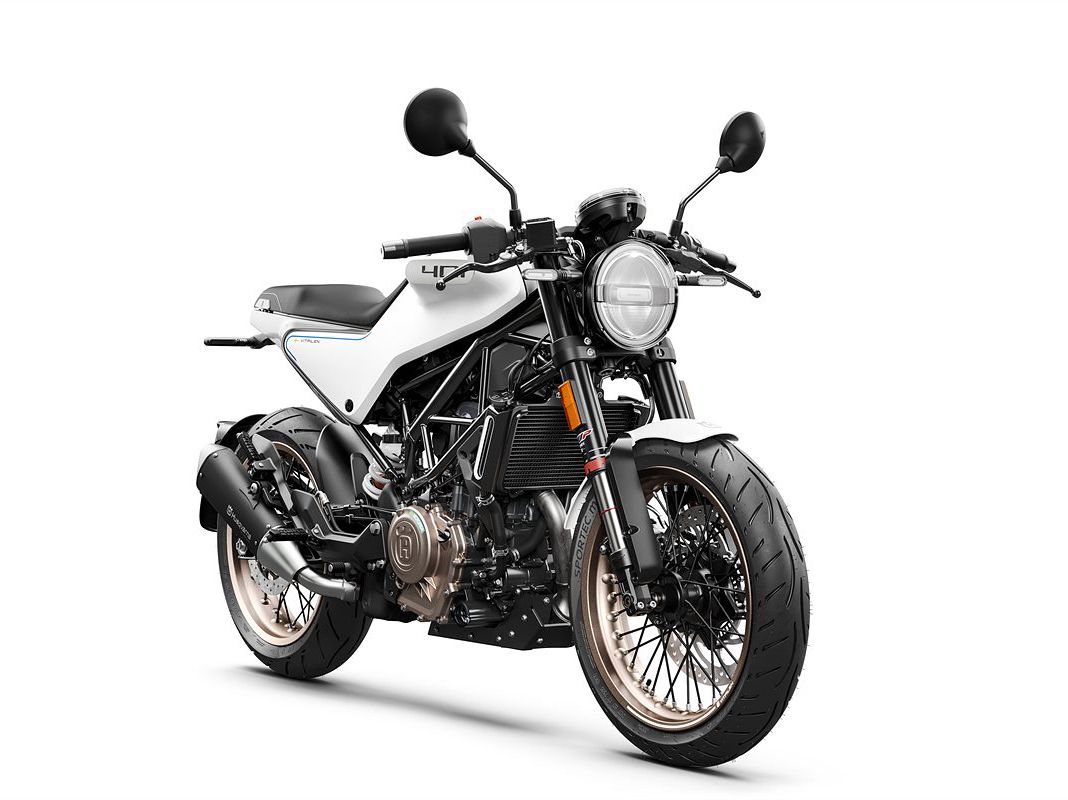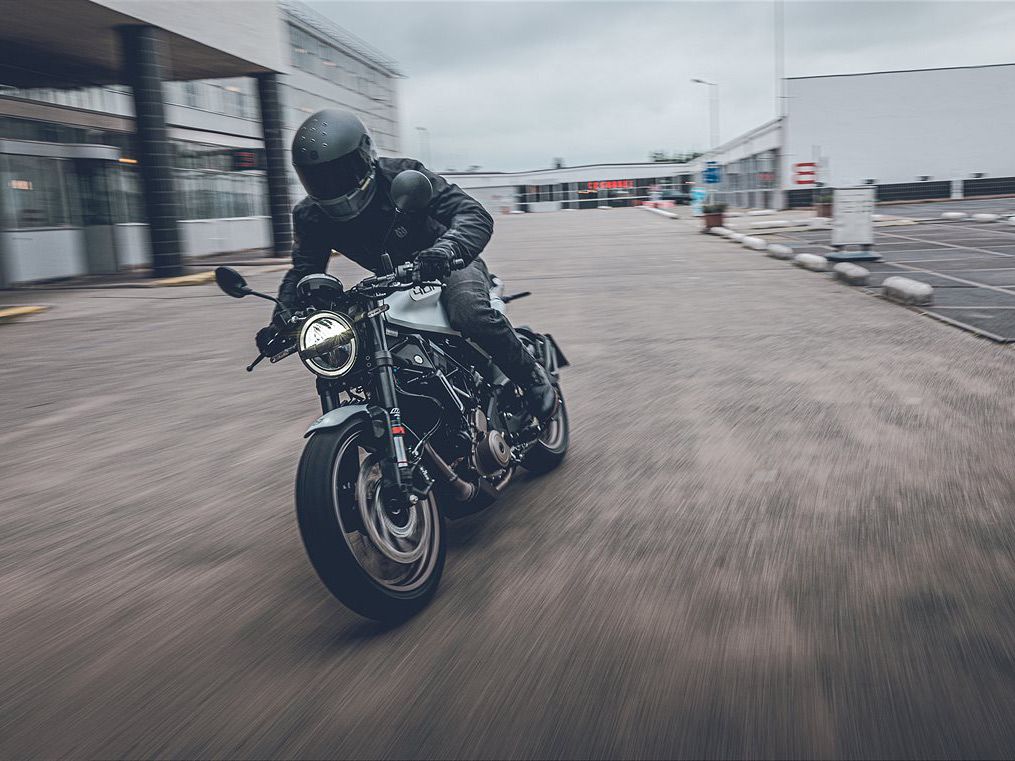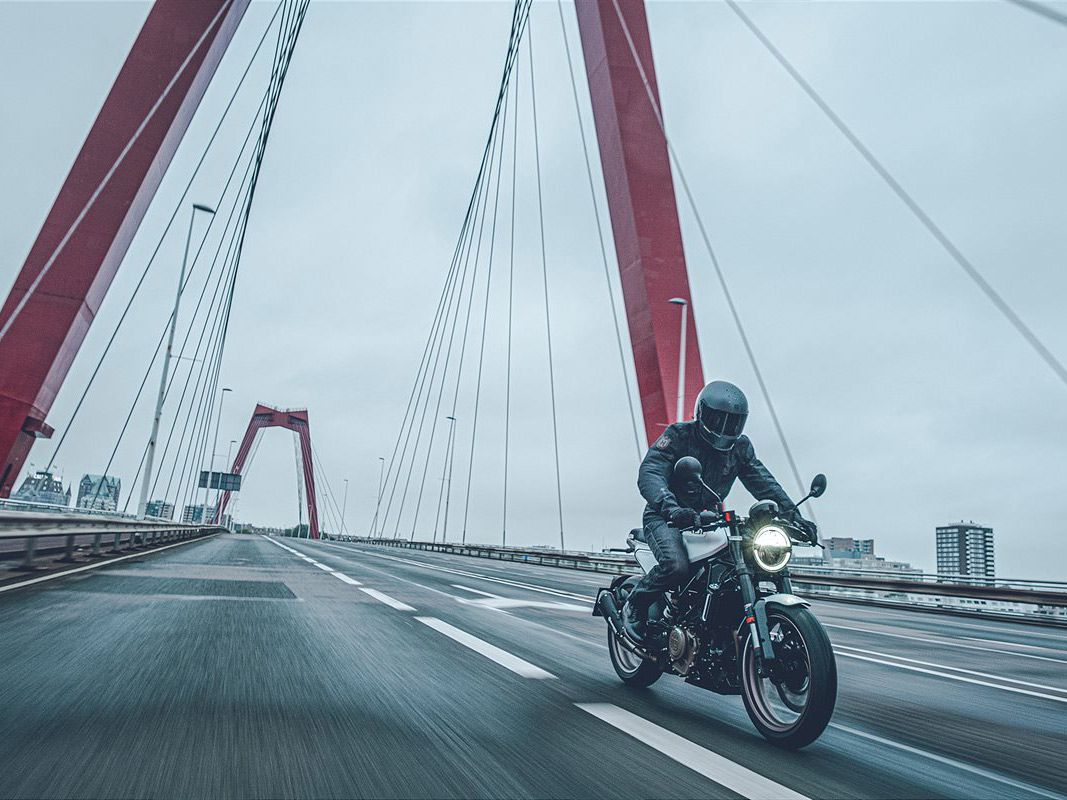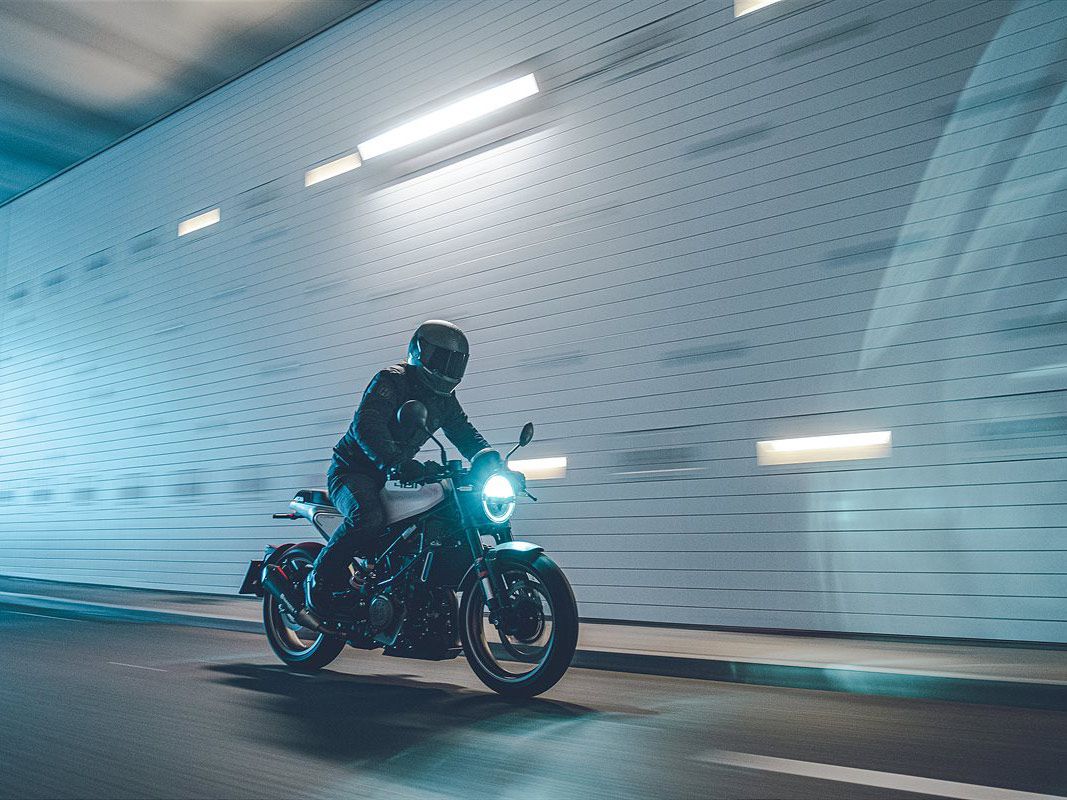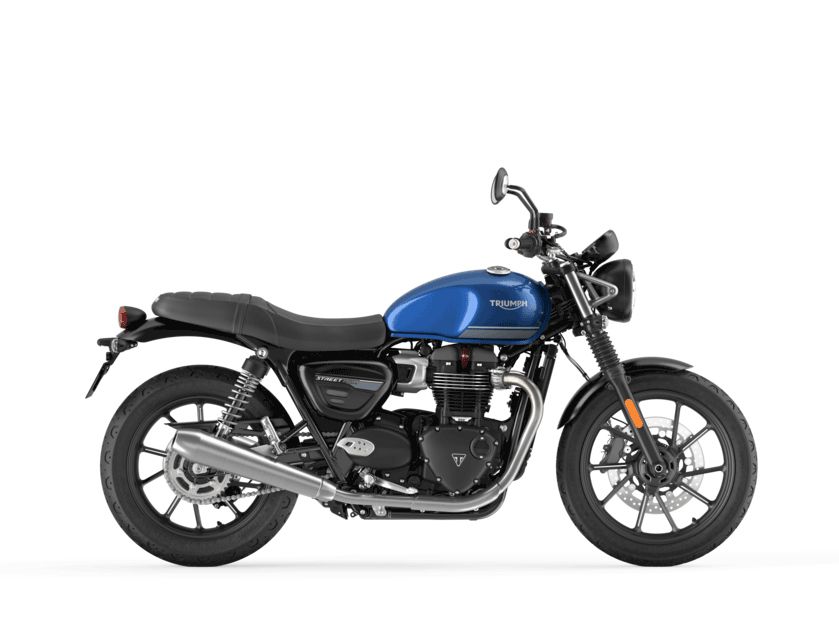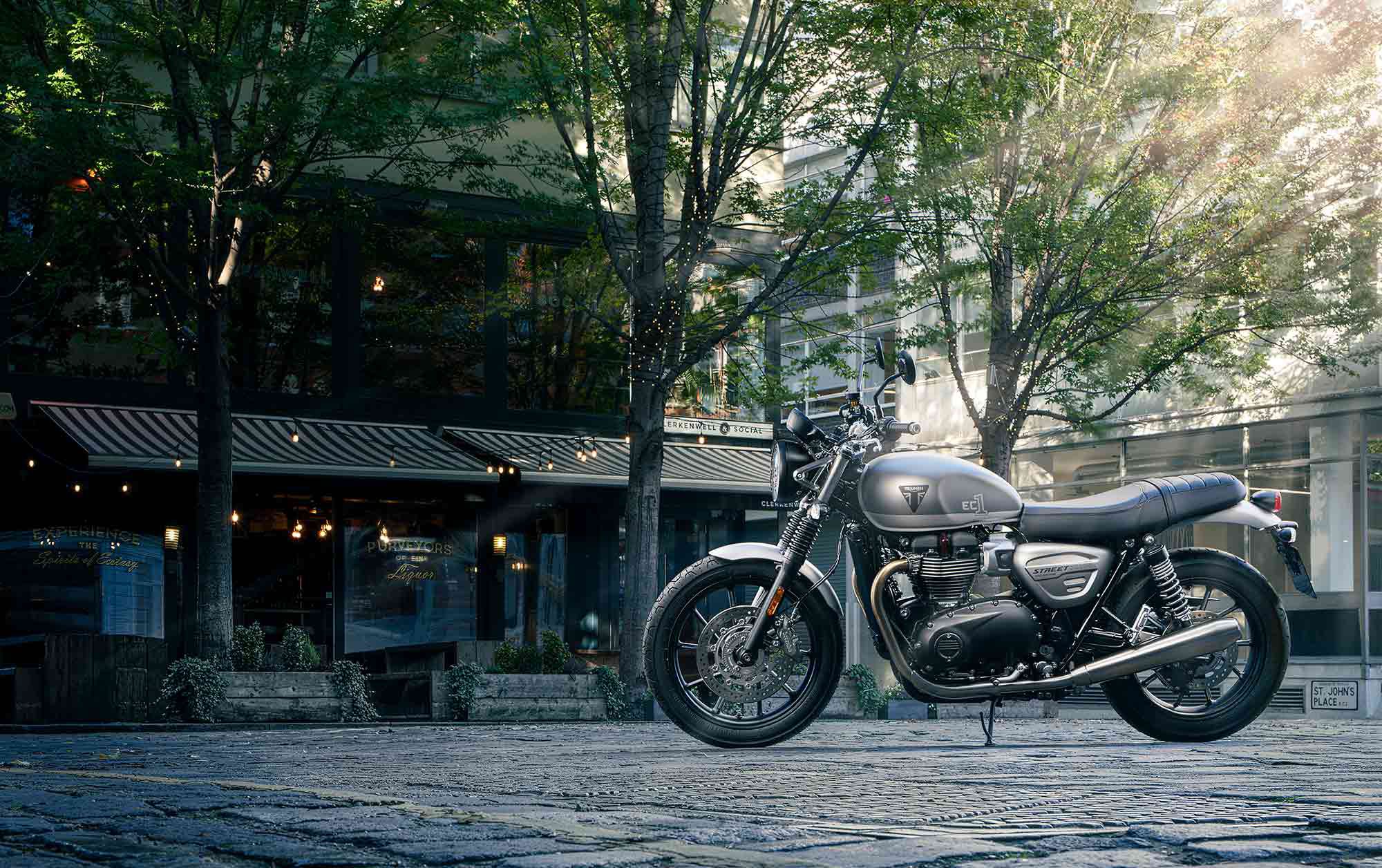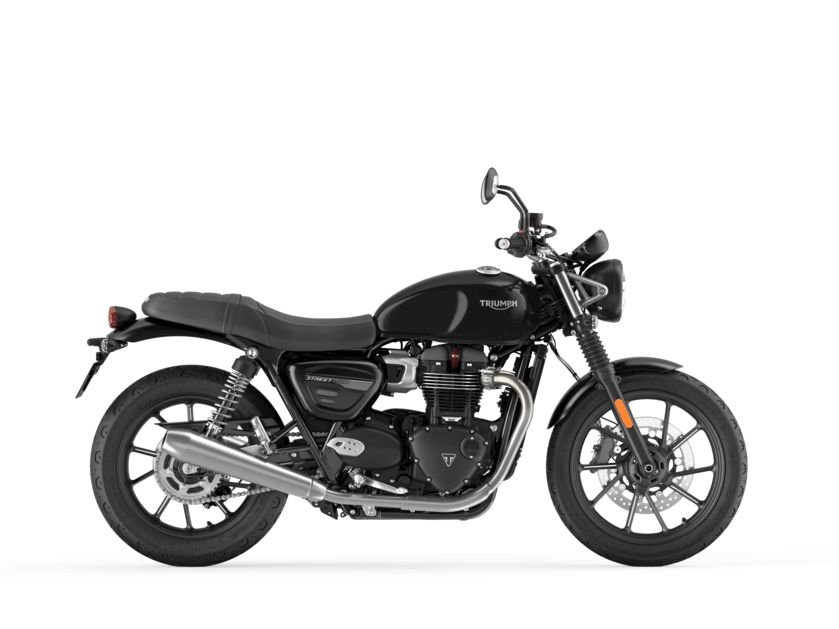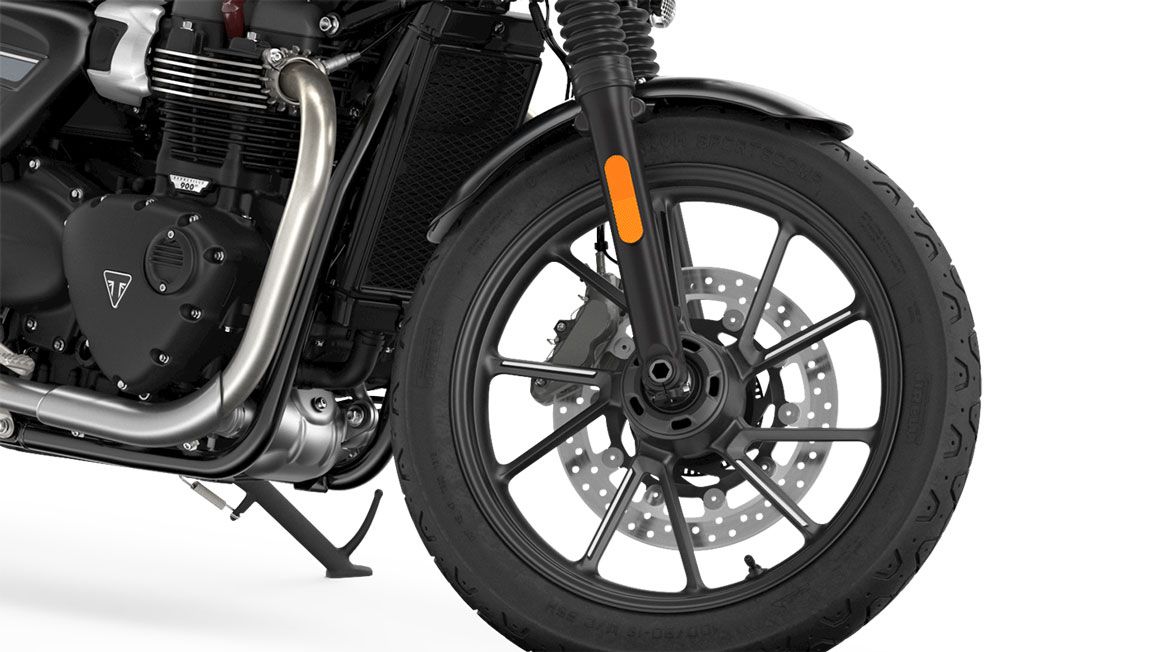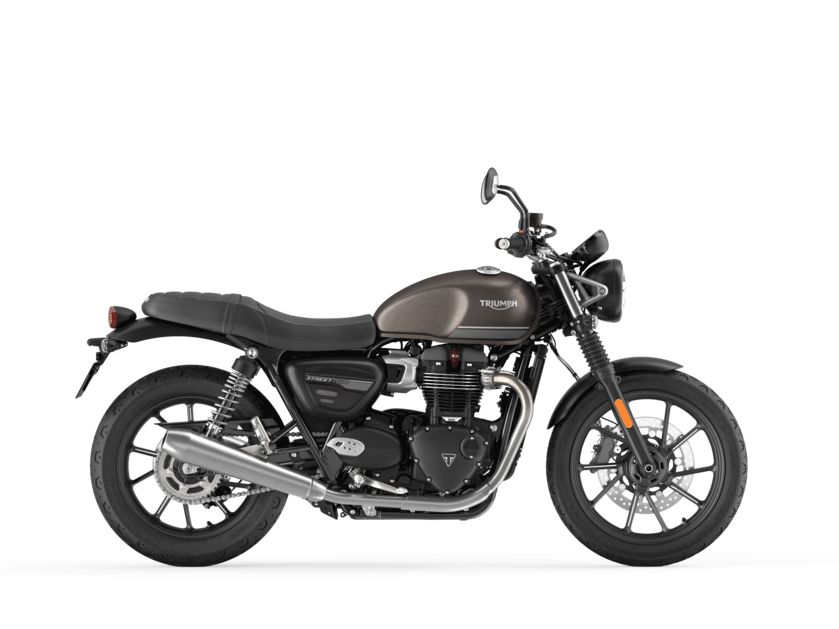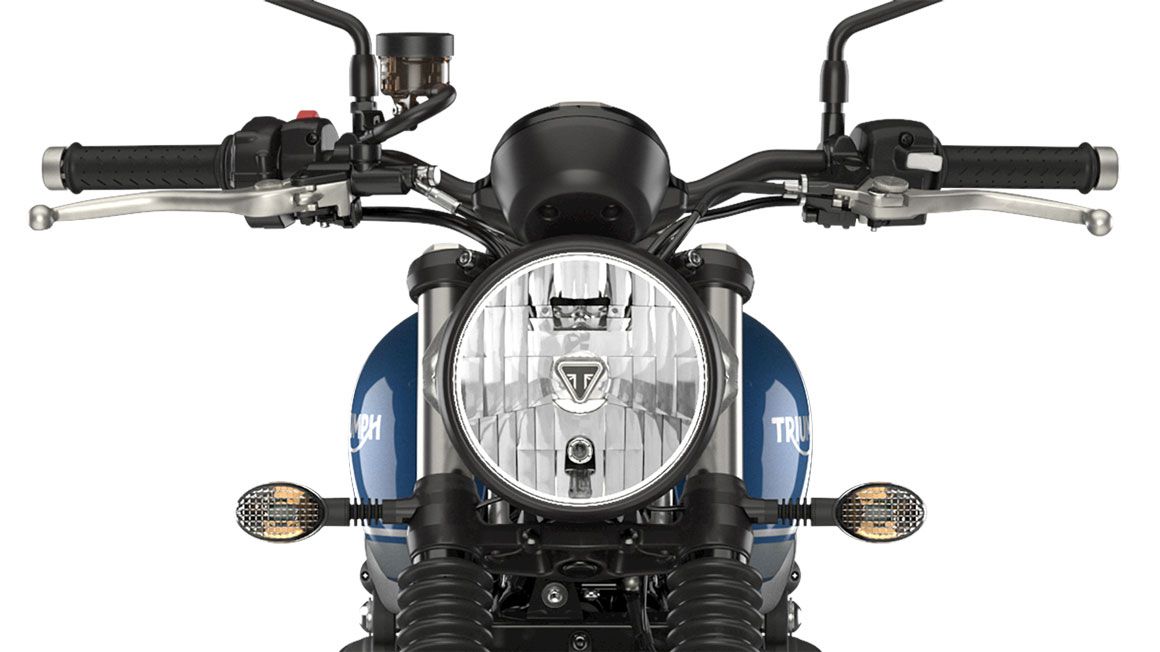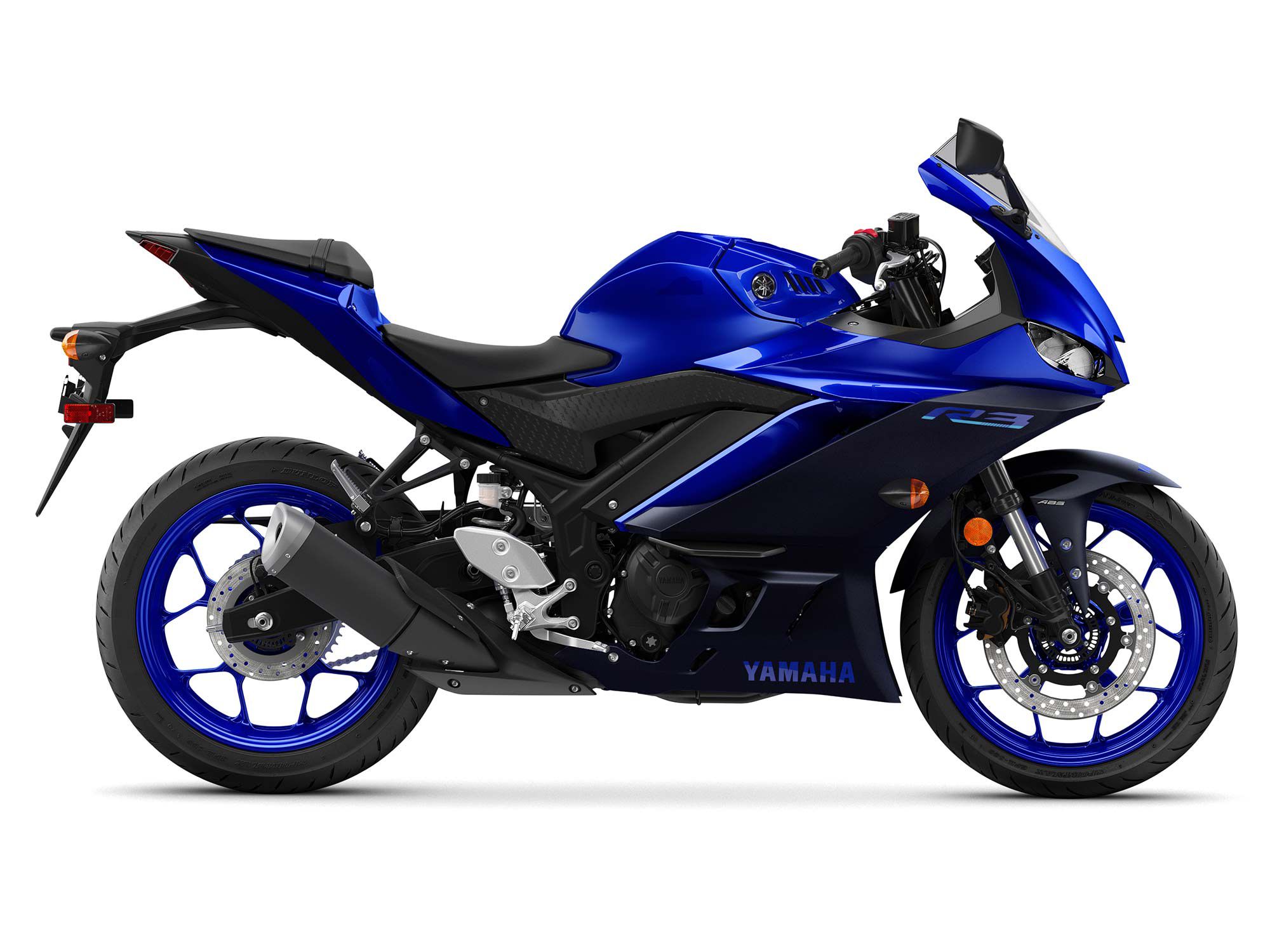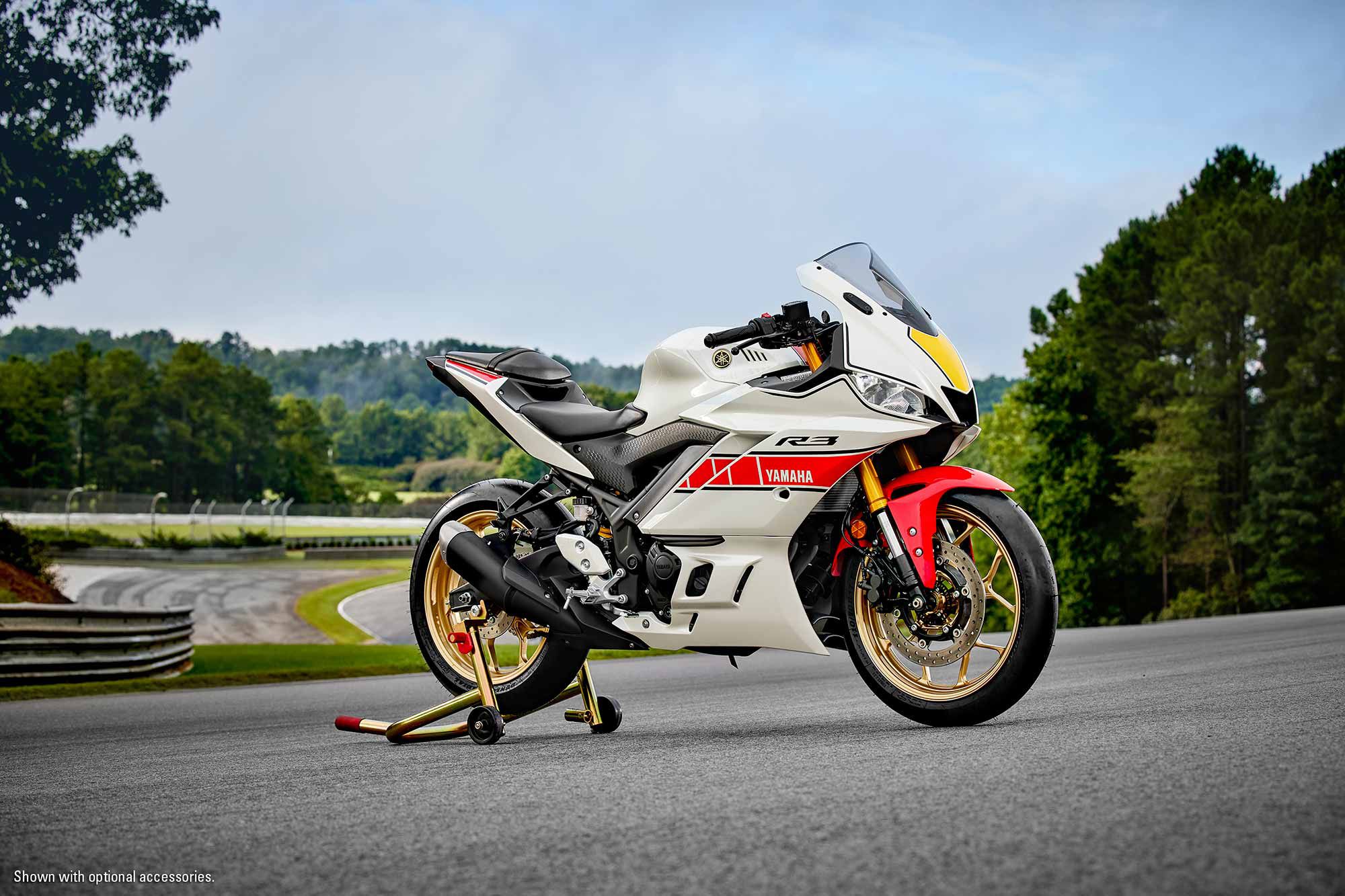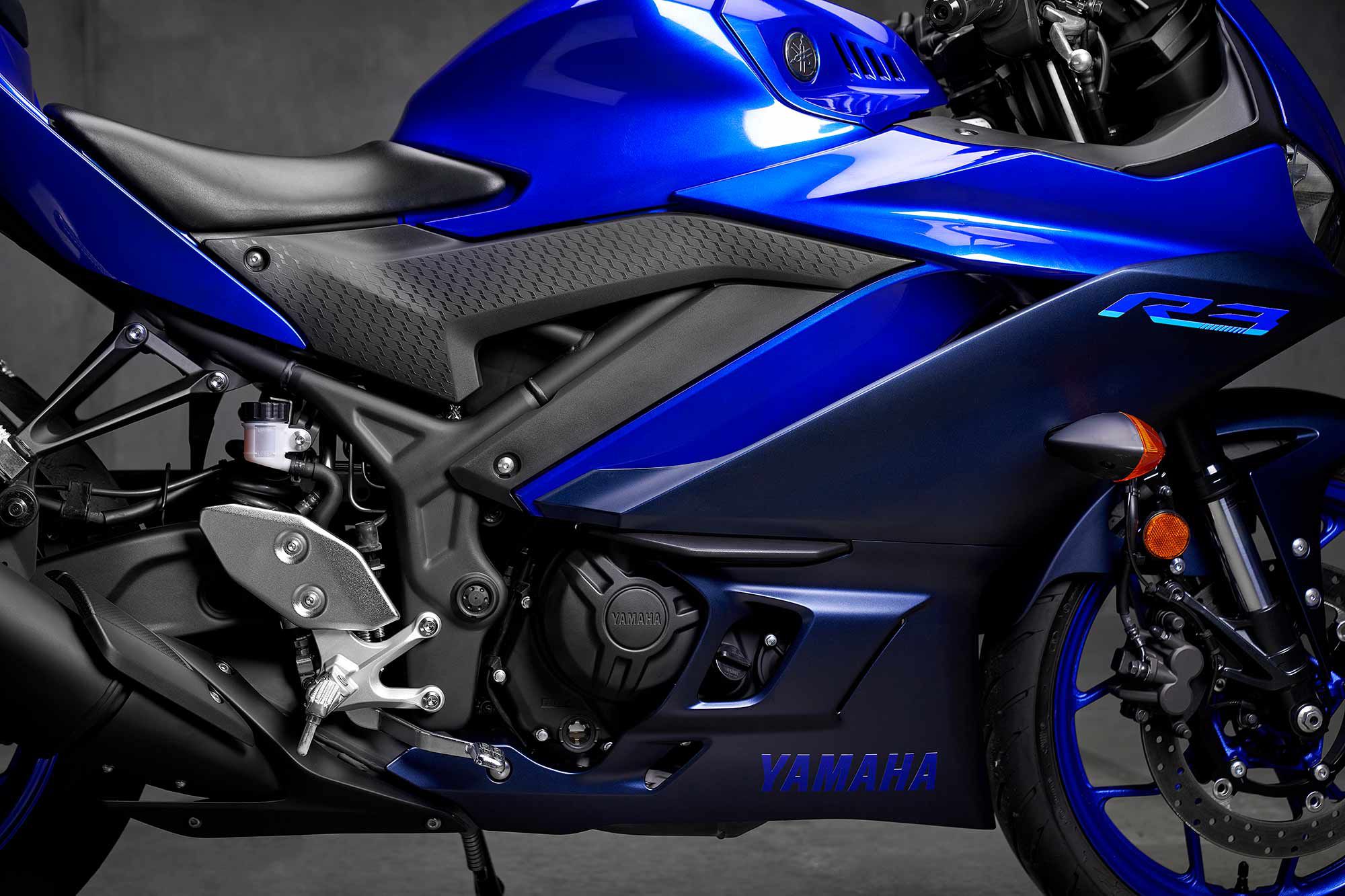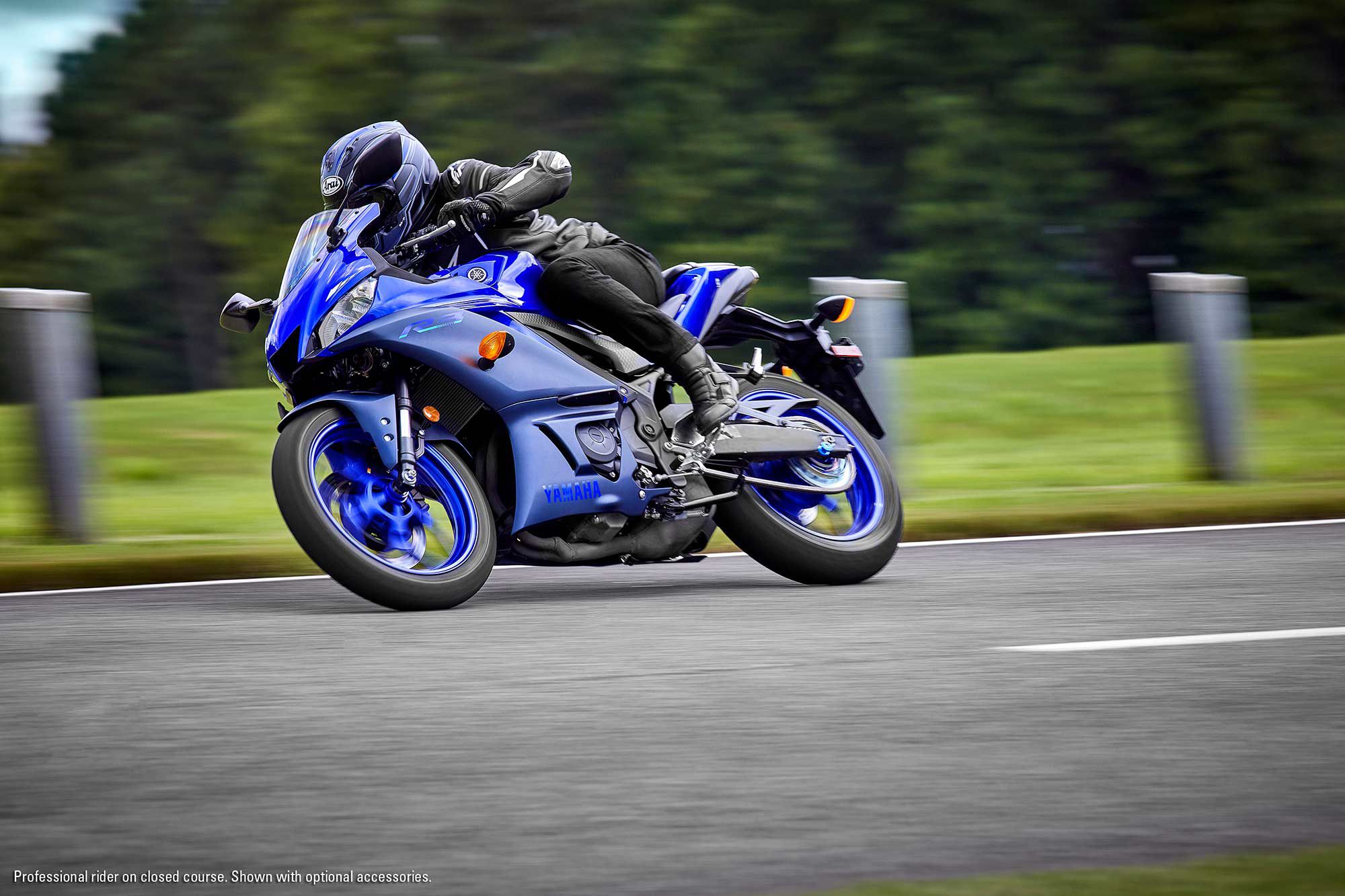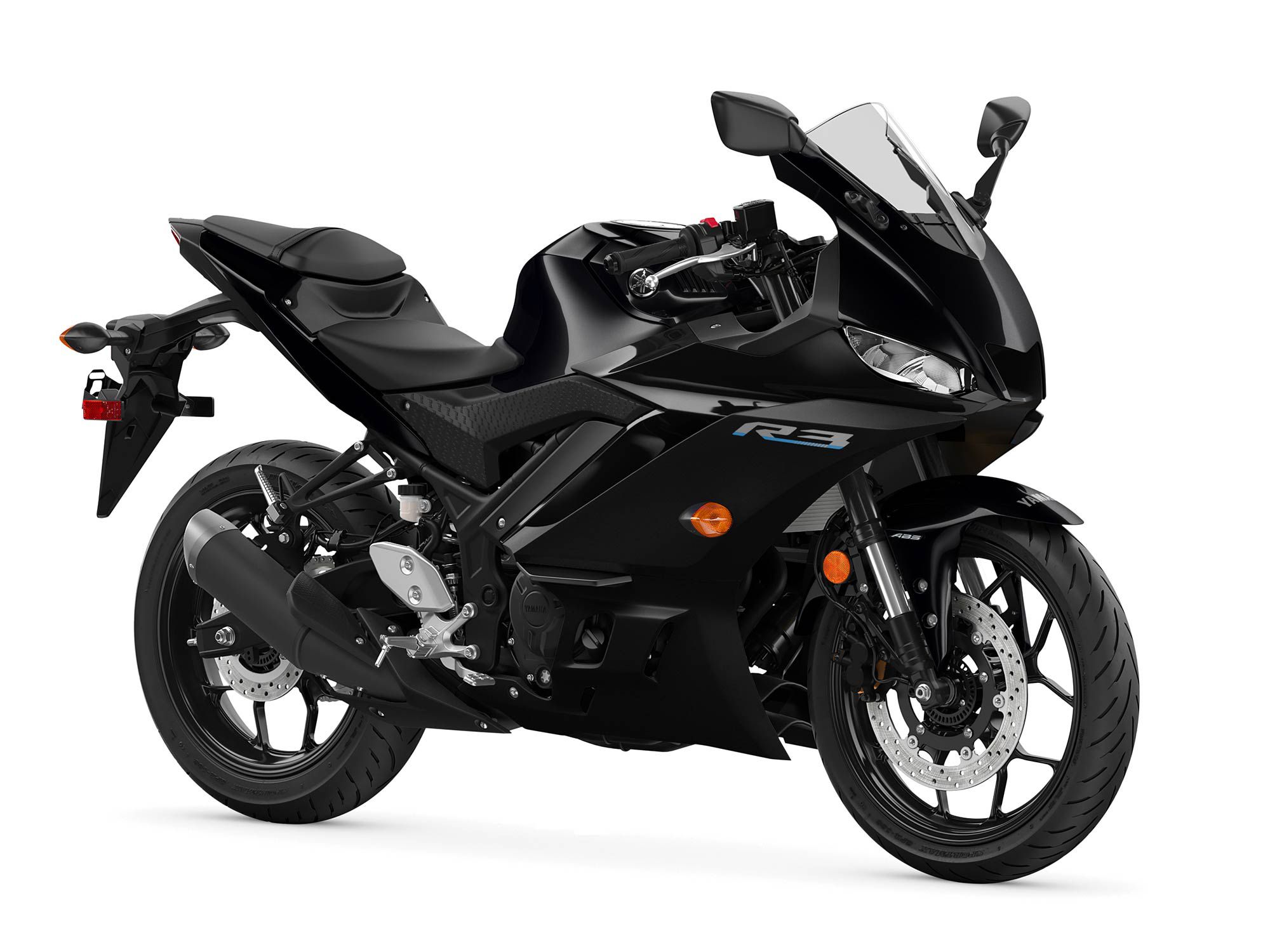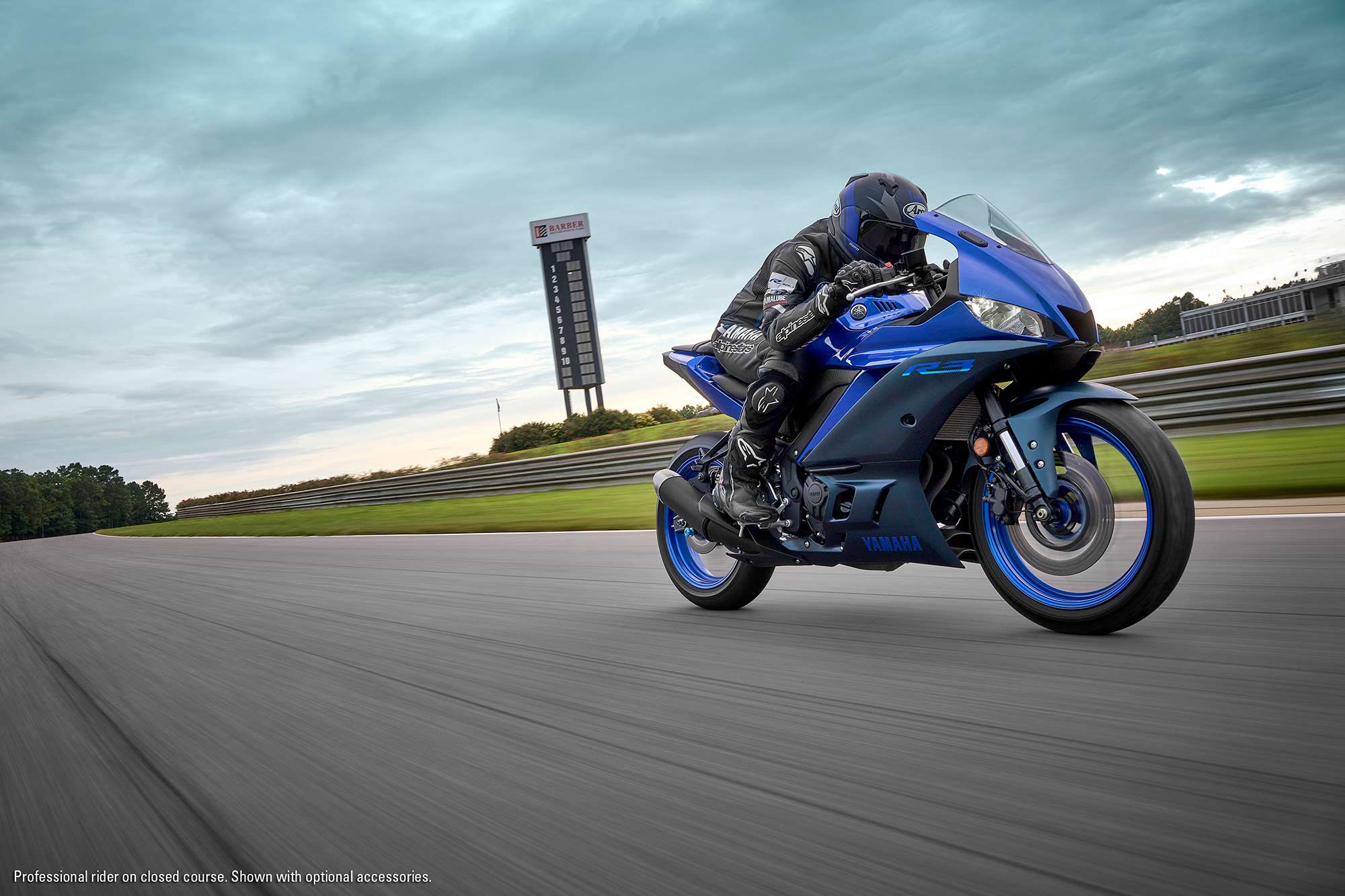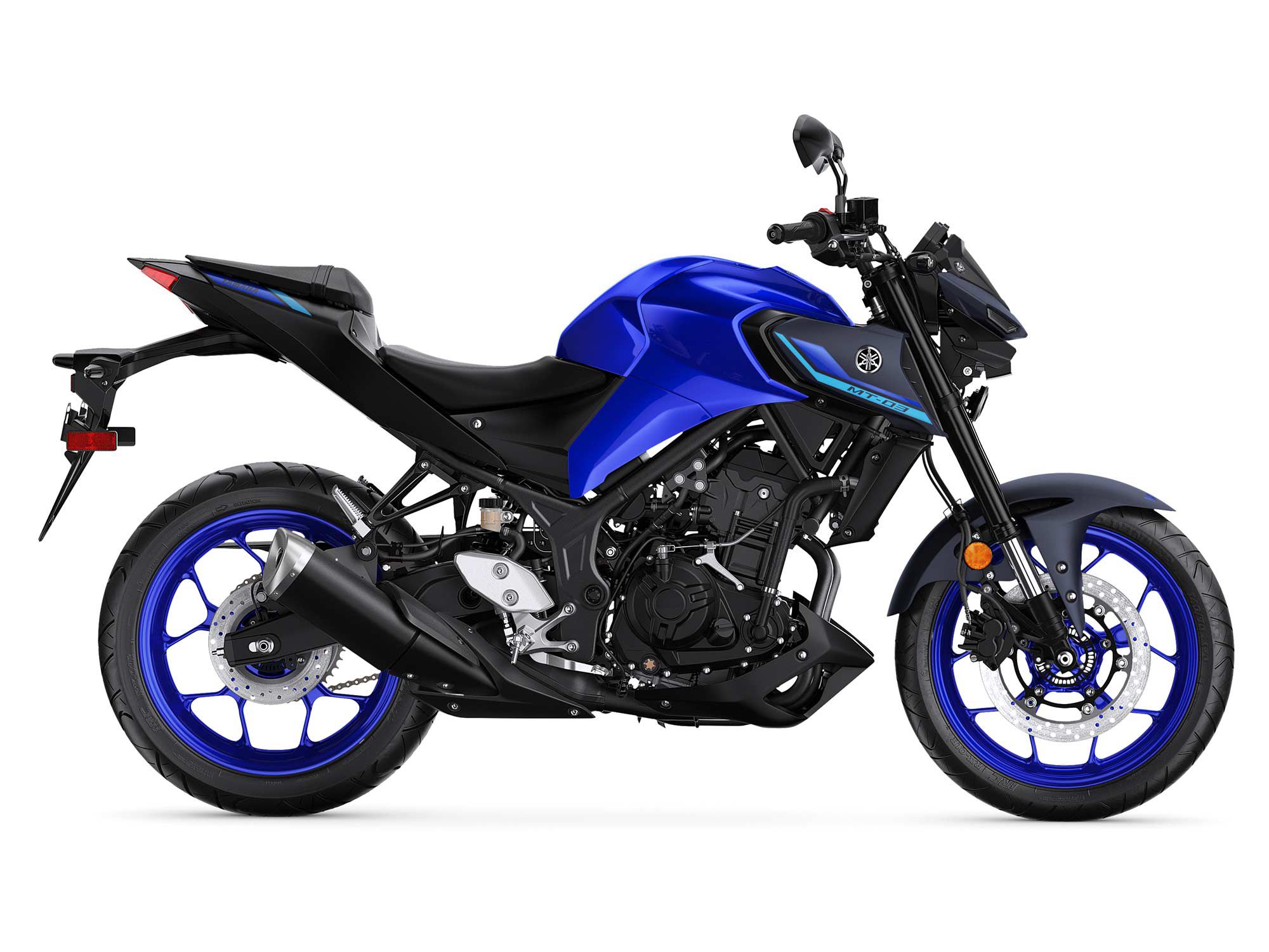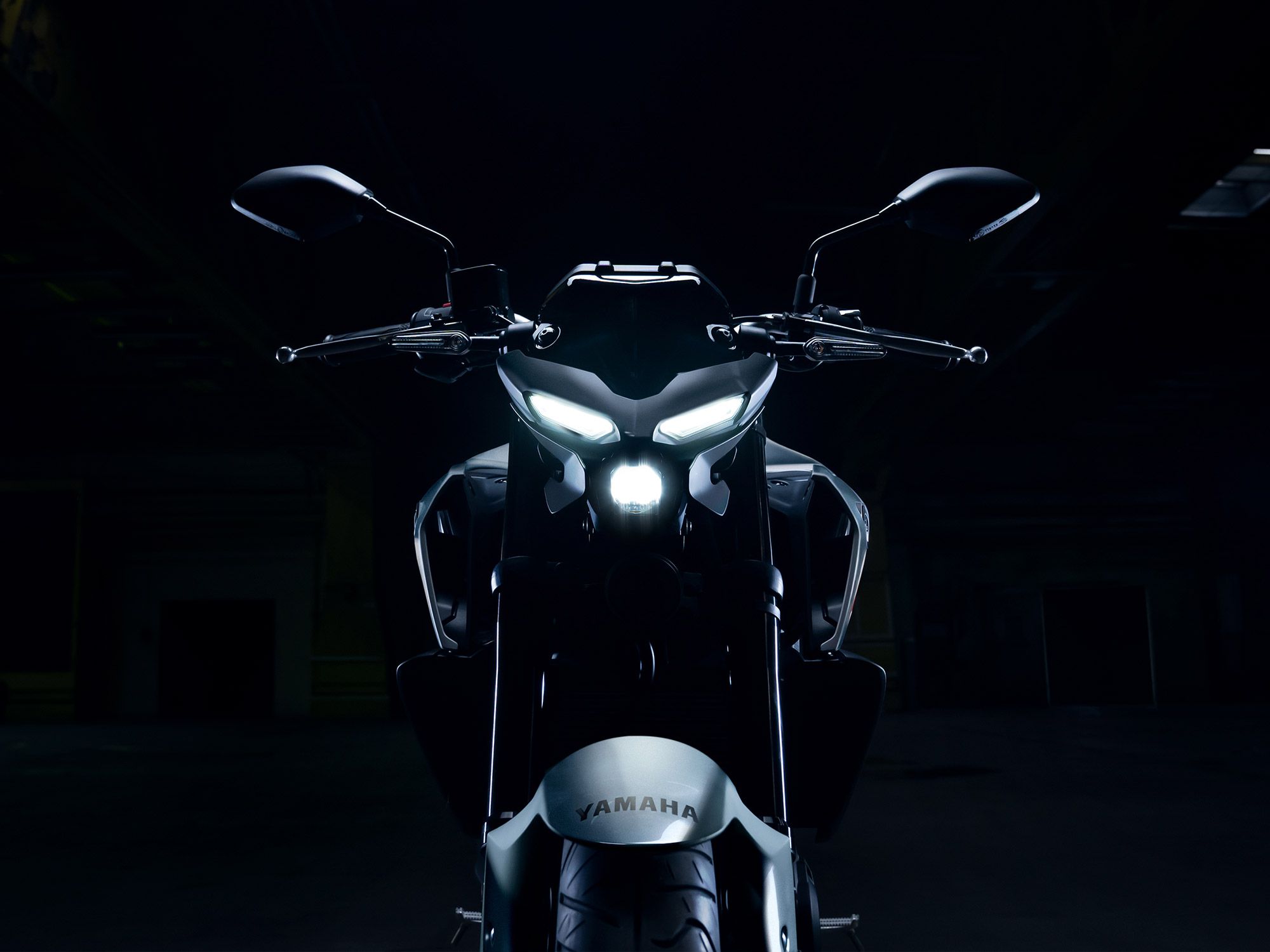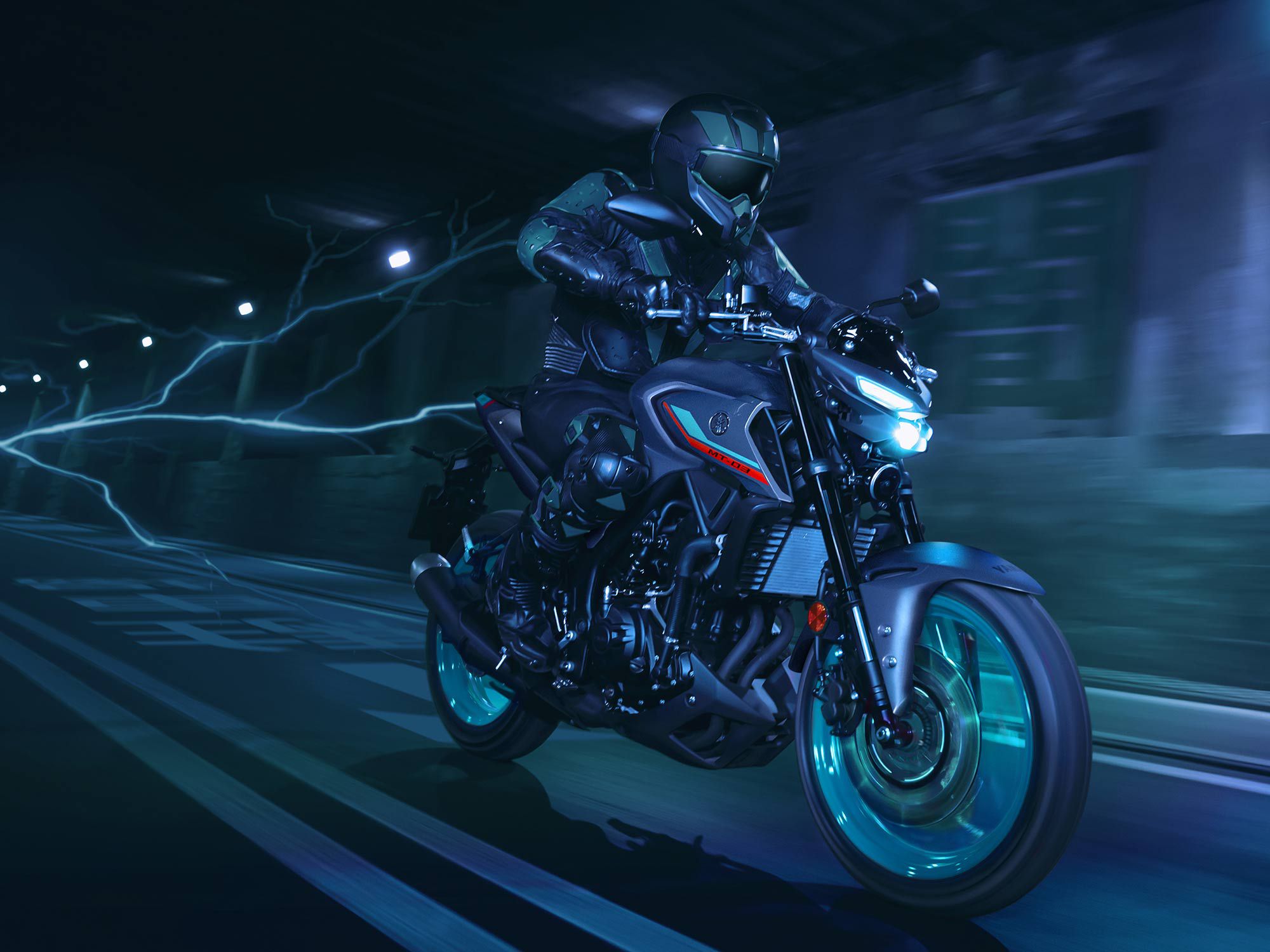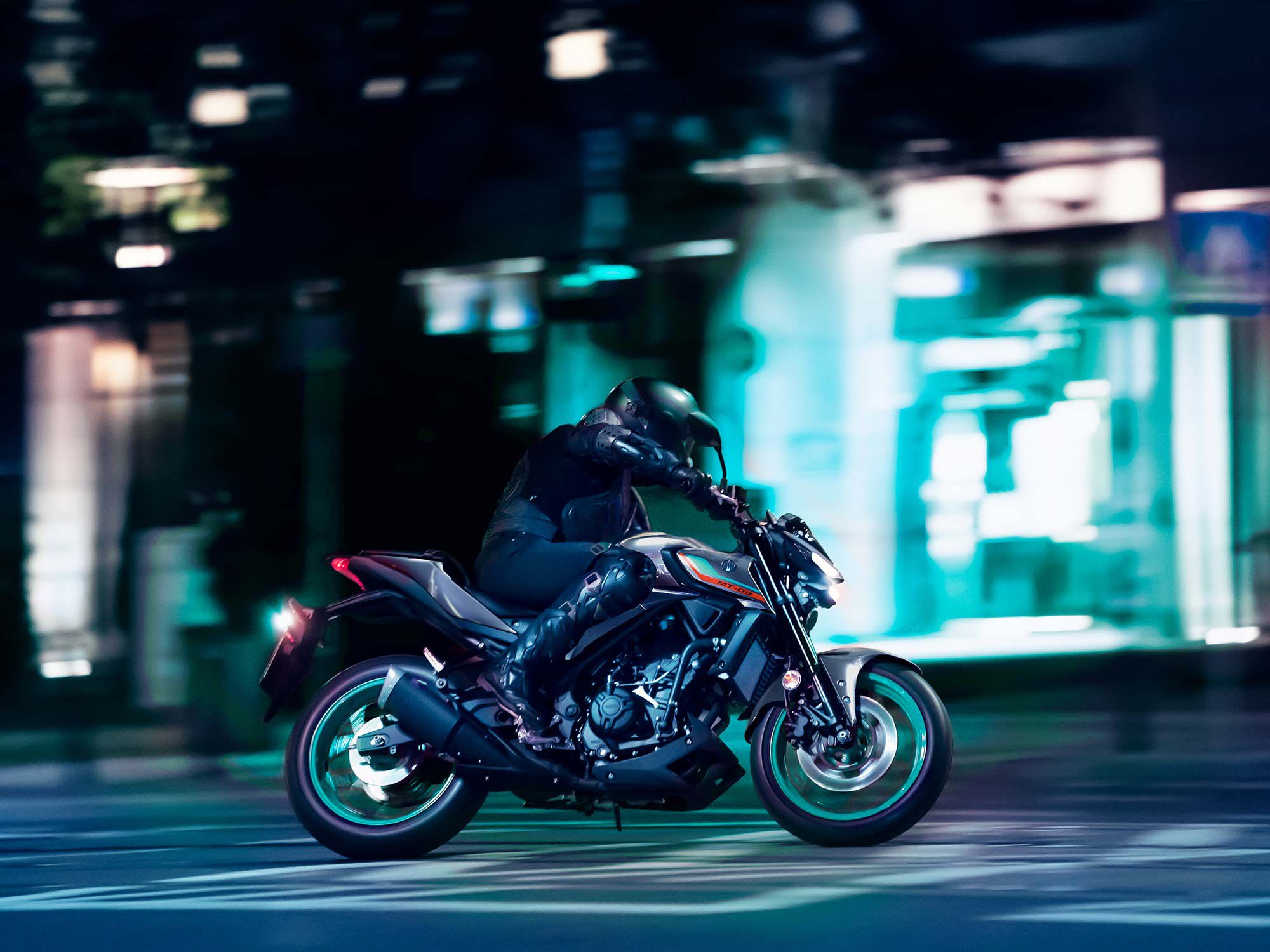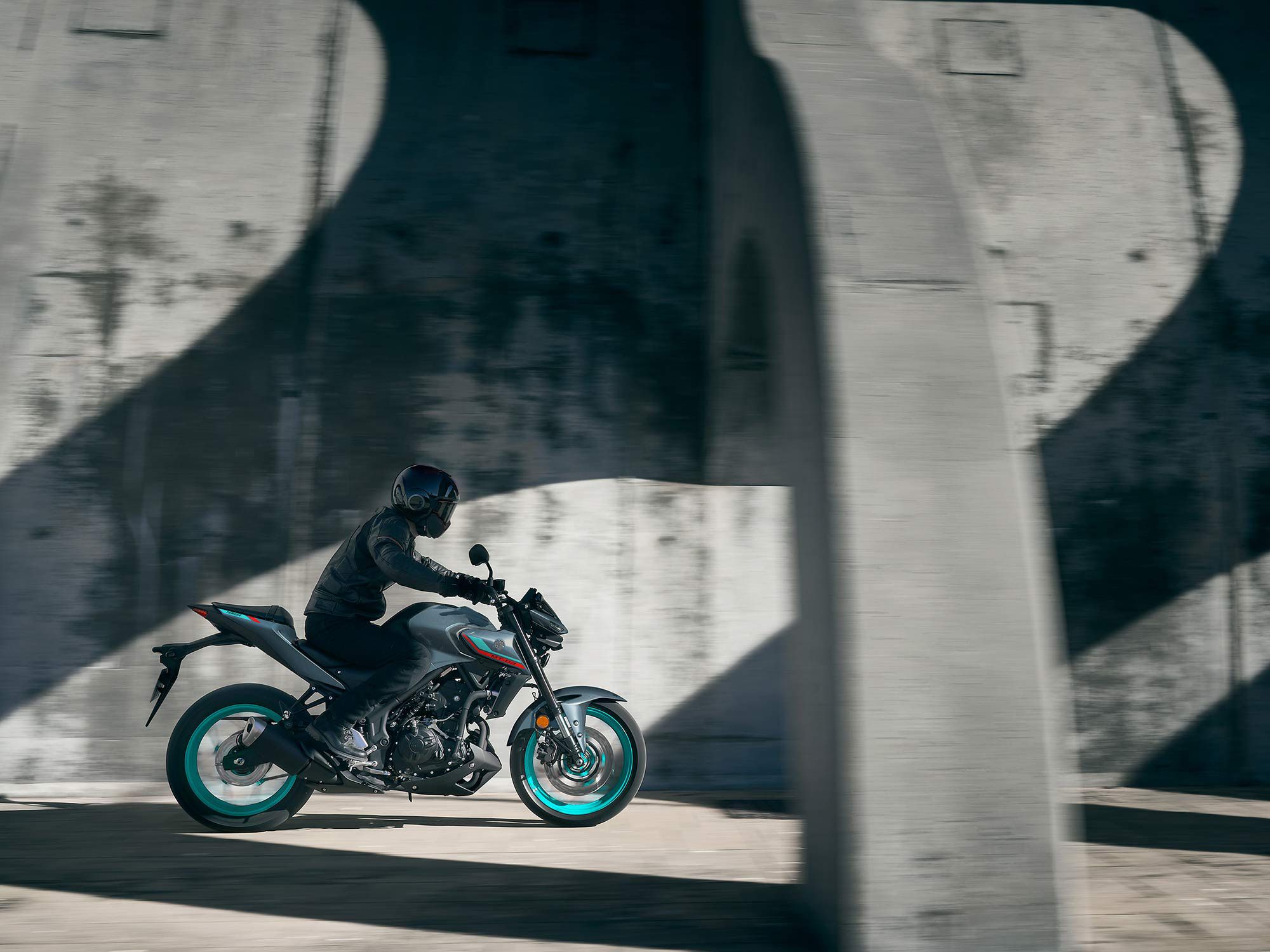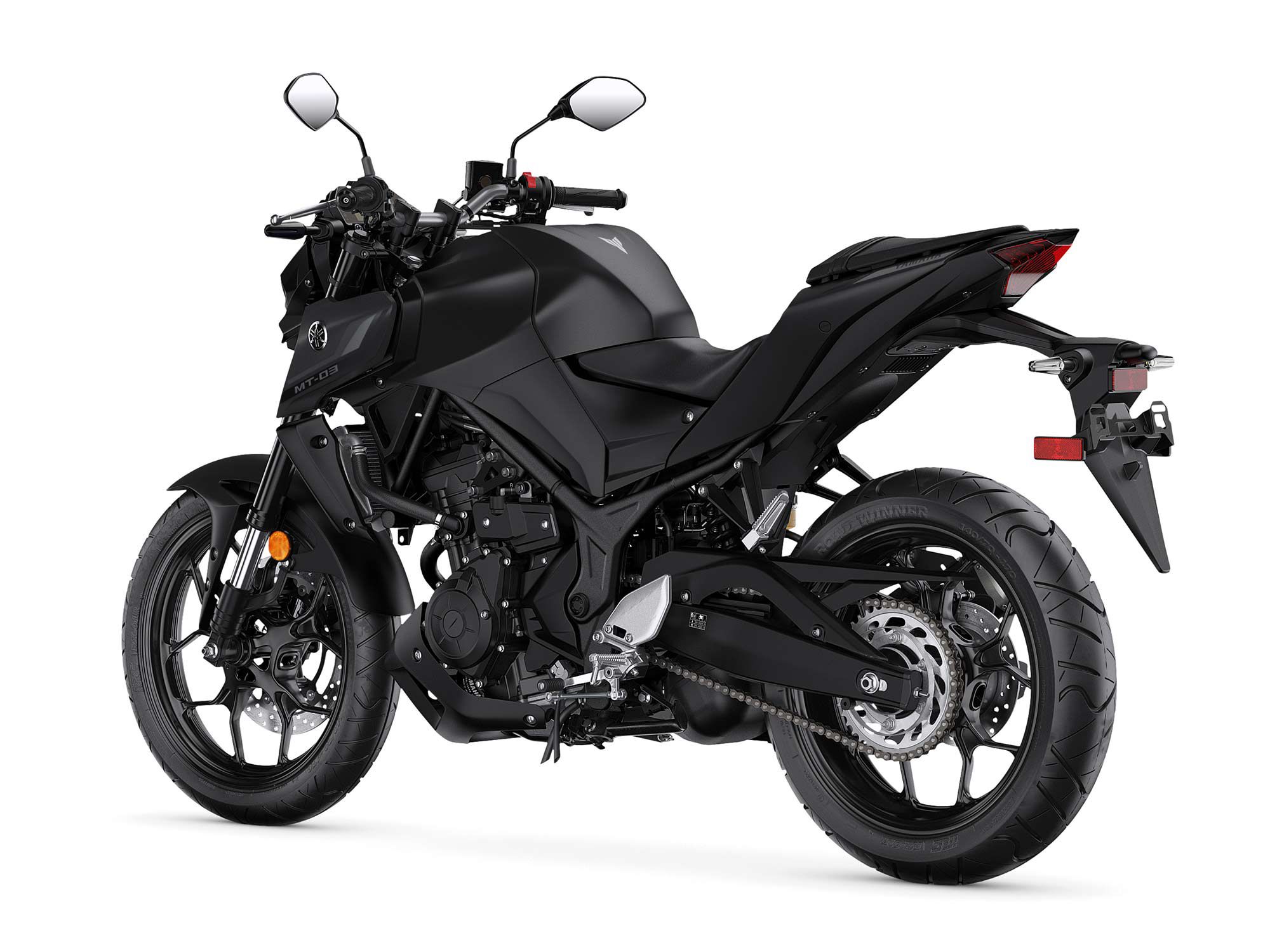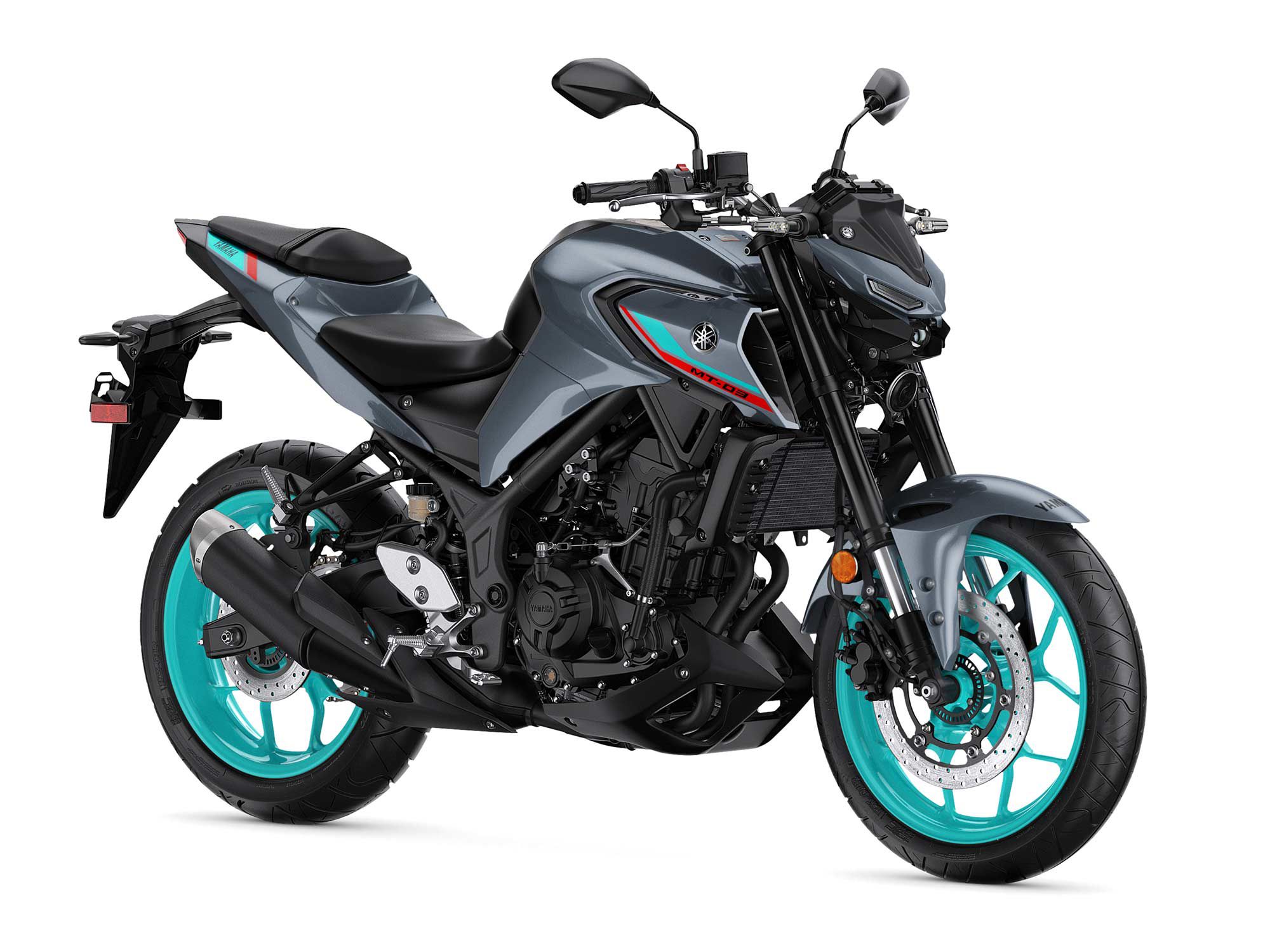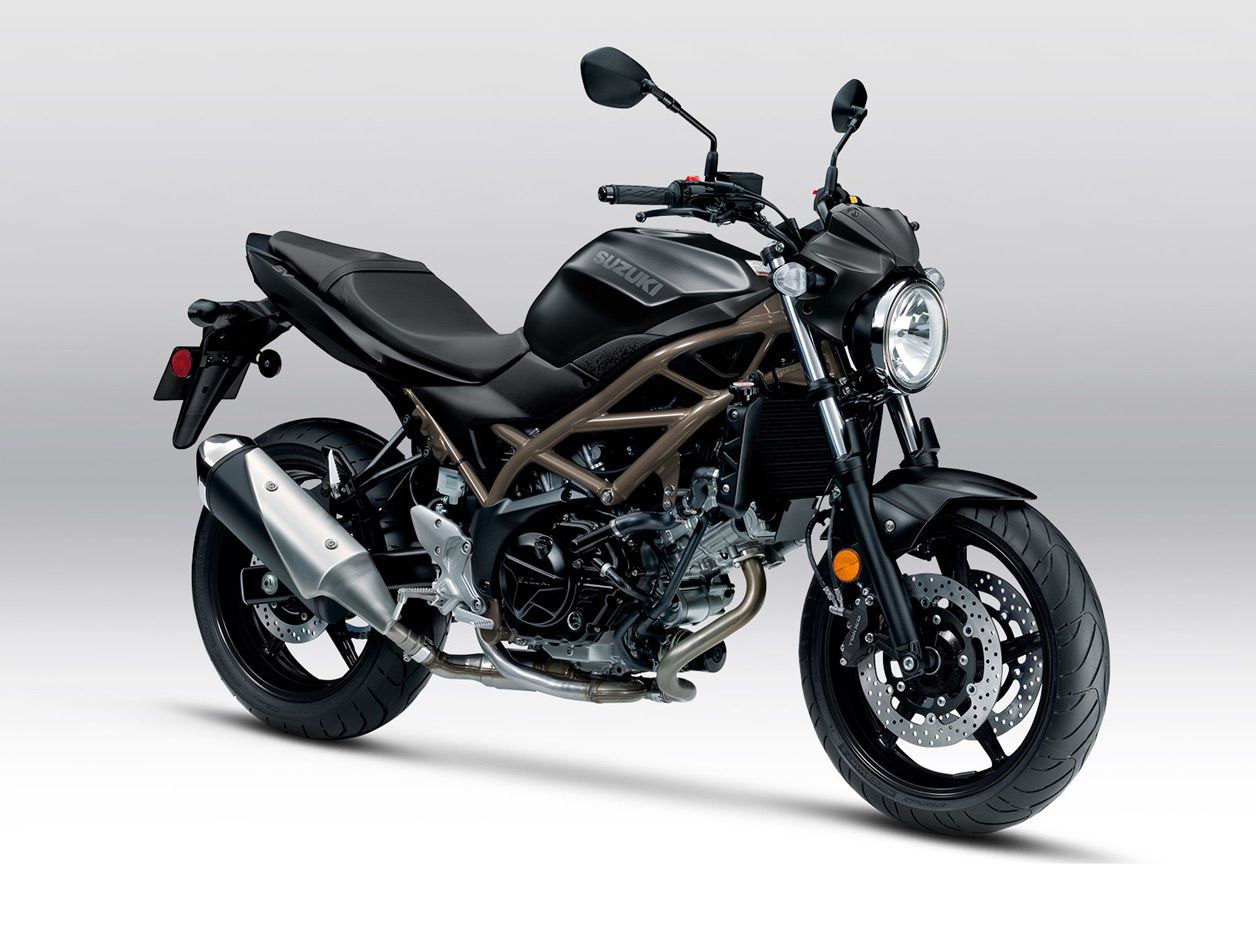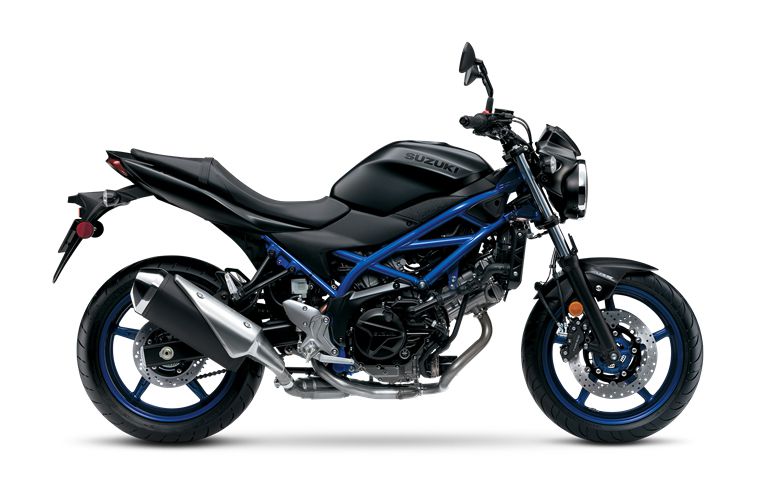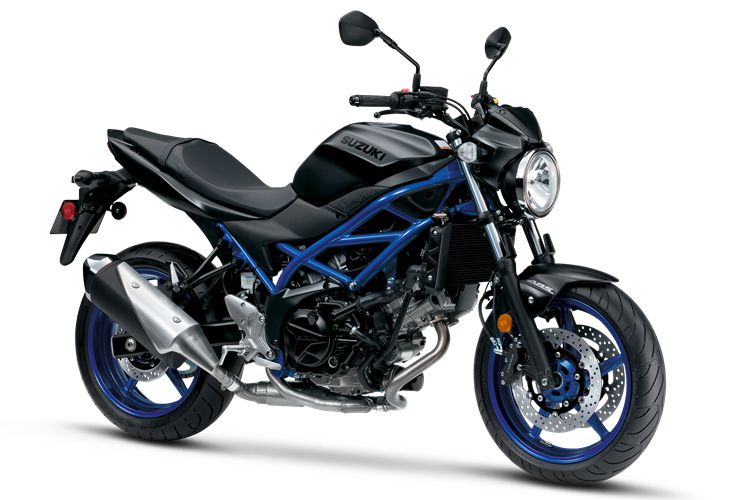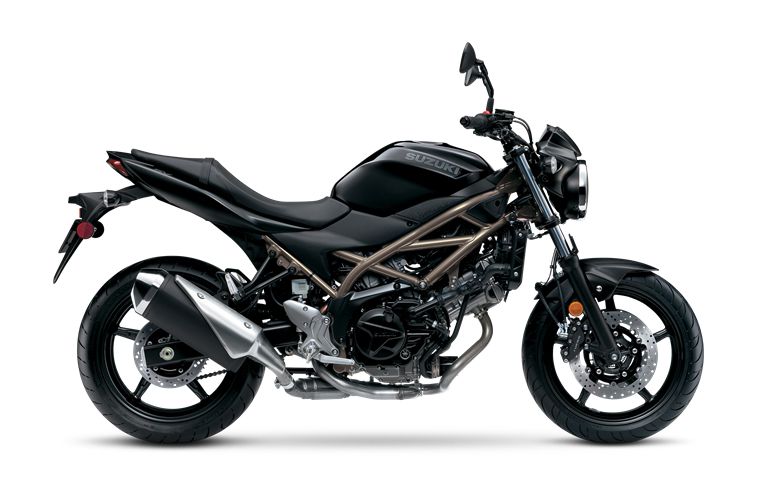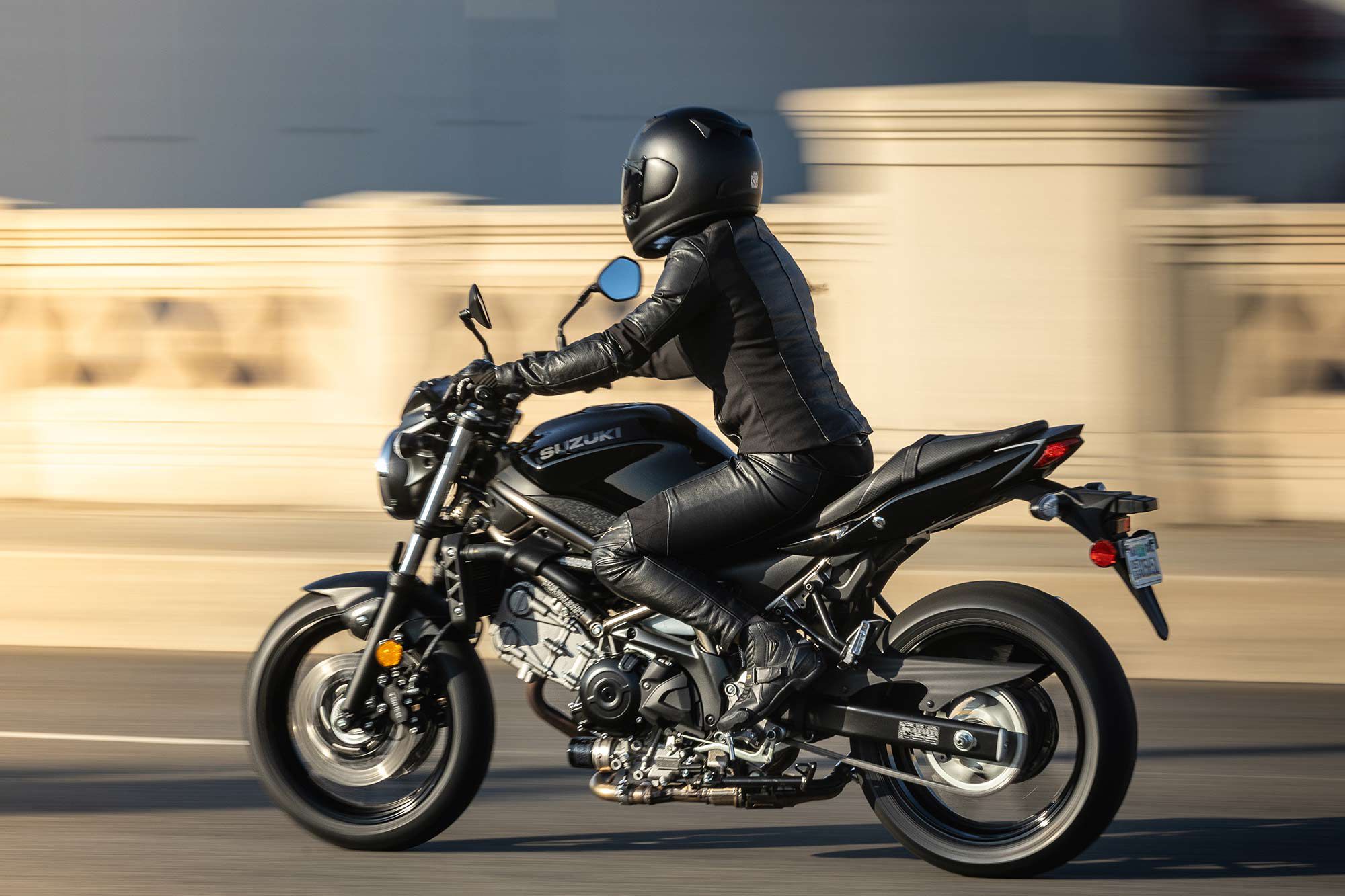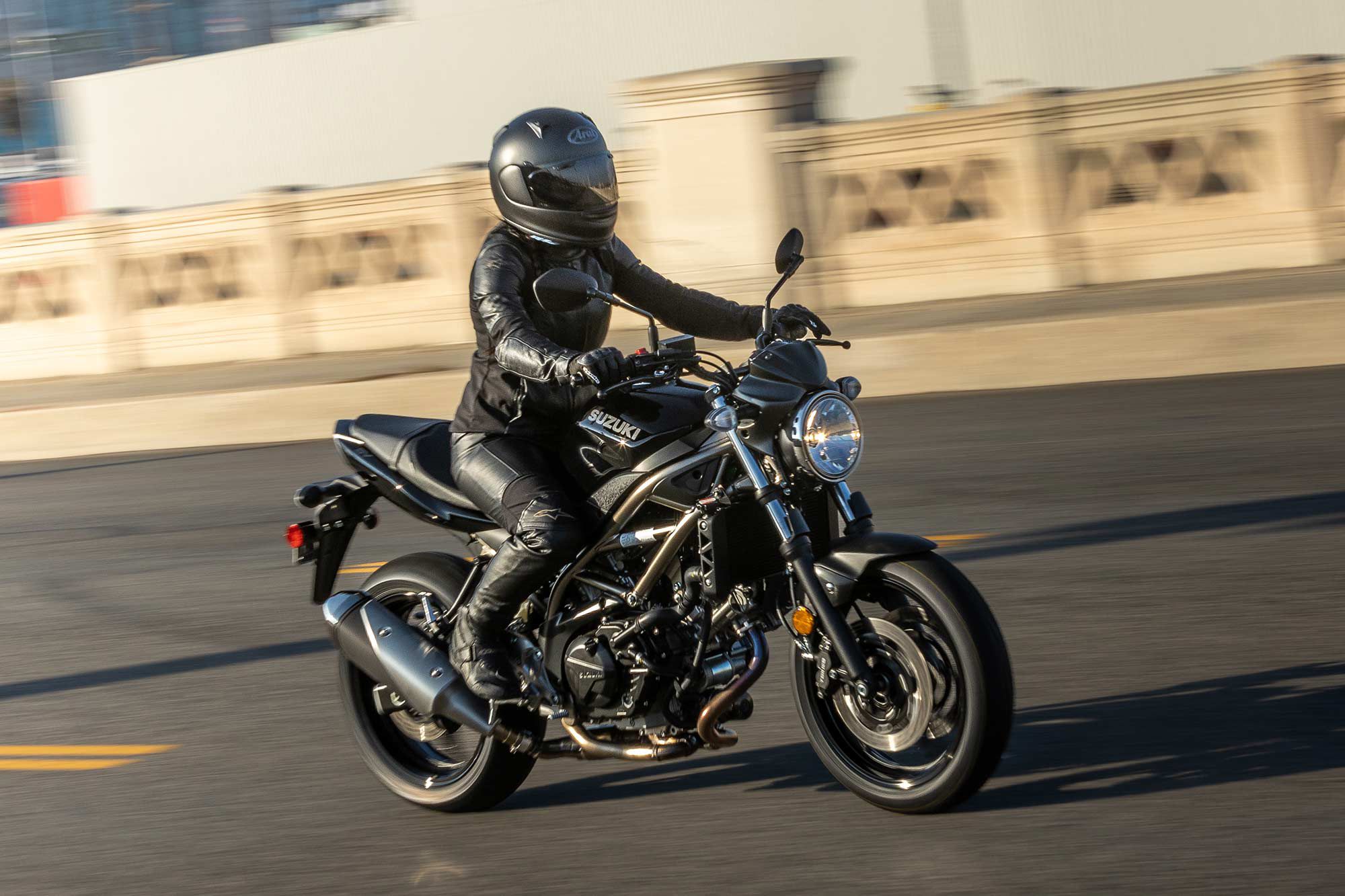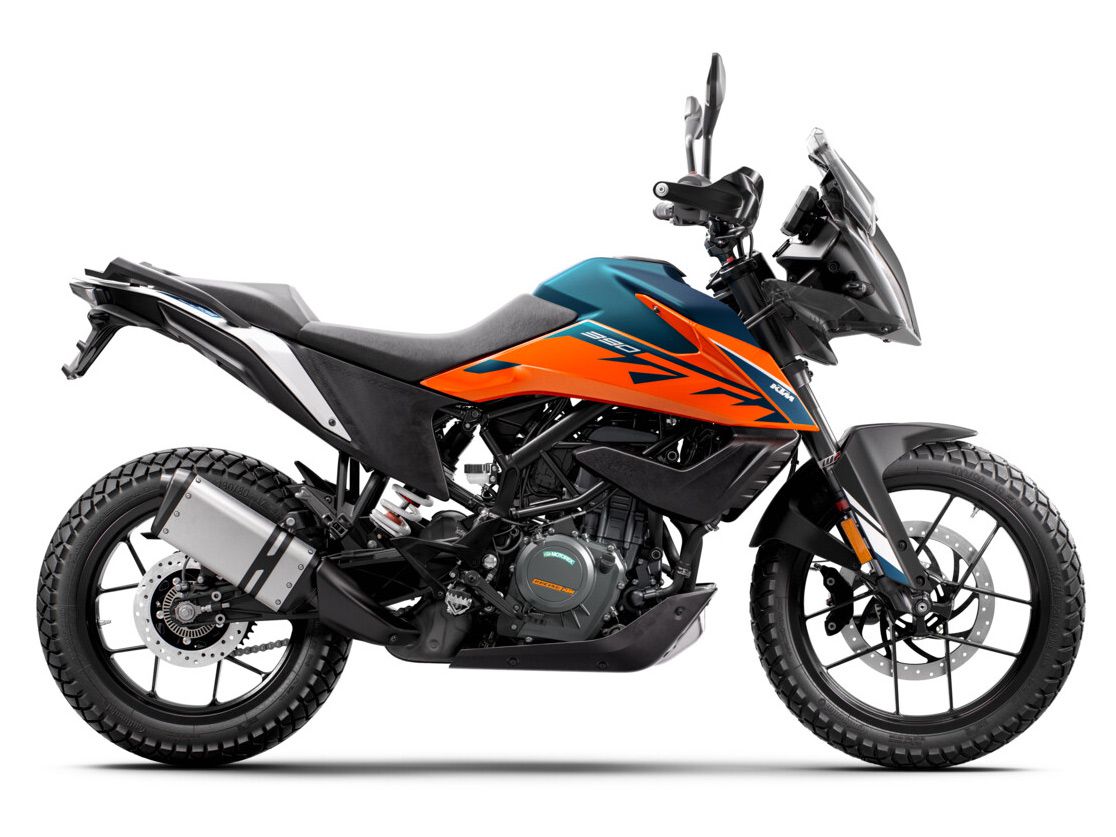
Ups
- Well priced for a first dip in the ADV pond
- Nice electronics suite that keeps on improving
- Confidence-inspiring stopping power
- Suspension performs well for both street and dirt applications
Downs
- Less refined switch gear
Verdict
While large-displacement ADVs are the golden ticket to long-distance exploring, there’s an argument to be made for smaller, lighter adventure motorcycles to help introduce riders to the category while also being a great time on the trail. KTM’s 390 Adventure is a perfect example of a small-displacement ADV that’s easy to manage yet fully capable of full-spectrum fun.
Overview
The motorcycle market has long prioritized highly capable, albeit large, adventure motorcycles suited for riders with years of experience. That meant only a small selection of ADV machines for the beginner. KTM spotted the gap, which resulted in the launch of the 2020 KTM 390 Adventure.
The Austrian manufacturer repurposed the heart of its beginner-appropriate 390 Duke and RC 390 and wrapped the powerplant in an able-bodied chassis for tackling rougher terrain. With input from multitime Baja winner Quinn Cody, the handling and suspension were developed for off-road chops. Additionally, as covered in CW’s first look, KTM claimed its trellis frame was similar to the one found on the 450 Rally, putting greater emphasis on the 390 ADV’s off-road spirit.
For 2022, KTM sprinkles some more ADV pixie dust on the 390 Adventure to bring it closer to its larger siblings. Updated electronics with off-road ride modes and “more robust” cast wheels make this latest offering even more capable. New paint makes it visually closer to KTM’s Dakar bikes as well.
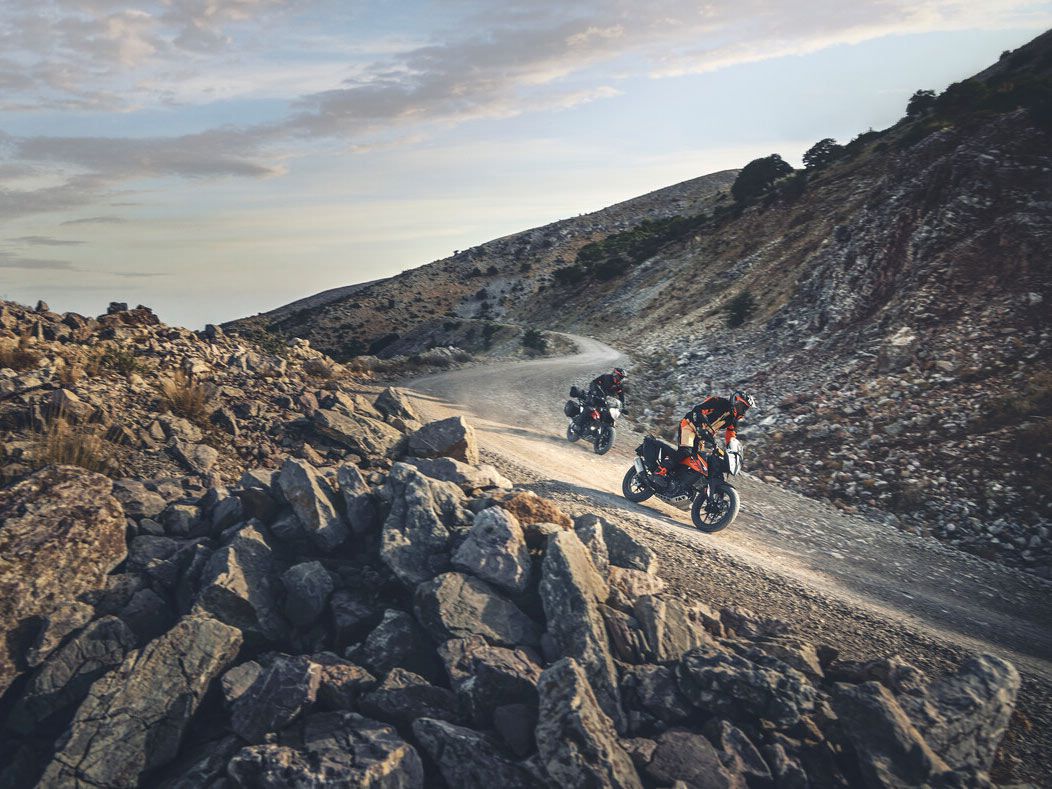
Updates for 2022
The bike is still essentially the same machine, with an unaltered steel trellis frame wrapped around a 373cc single-cylinder DOHC water-cooled engine making an impressive 43 hp and 27 lb.-ft. of torque. Recently updated to meet Euro 5 emissions limits on KTM’s home continent, that mill gets a new suite of electronic rider aids for 2022.
The traction control system now has an off-road mode alongside the standard street setting, allowing more wheelspin before stepping in to cut torque. Meanwhile, updated ABS now includes a cornering system that works when the bike is banked.
The 2022 bike also gets new 10-spoke cast alloy wheels said to be stronger than the previous hoops.
Pricing and Variants
The 390 Adventure comes in two color choices and is listed at an MSRP of $6,799.
Competition
The adventurous 390 can battle it out with the BMW G 310 GS, Kawasaki Versys-X 300, or Honda CB500X, but these would need more aggressive tire treads to better compete with the KTM’s dirt-suited Continental TKC 70s.
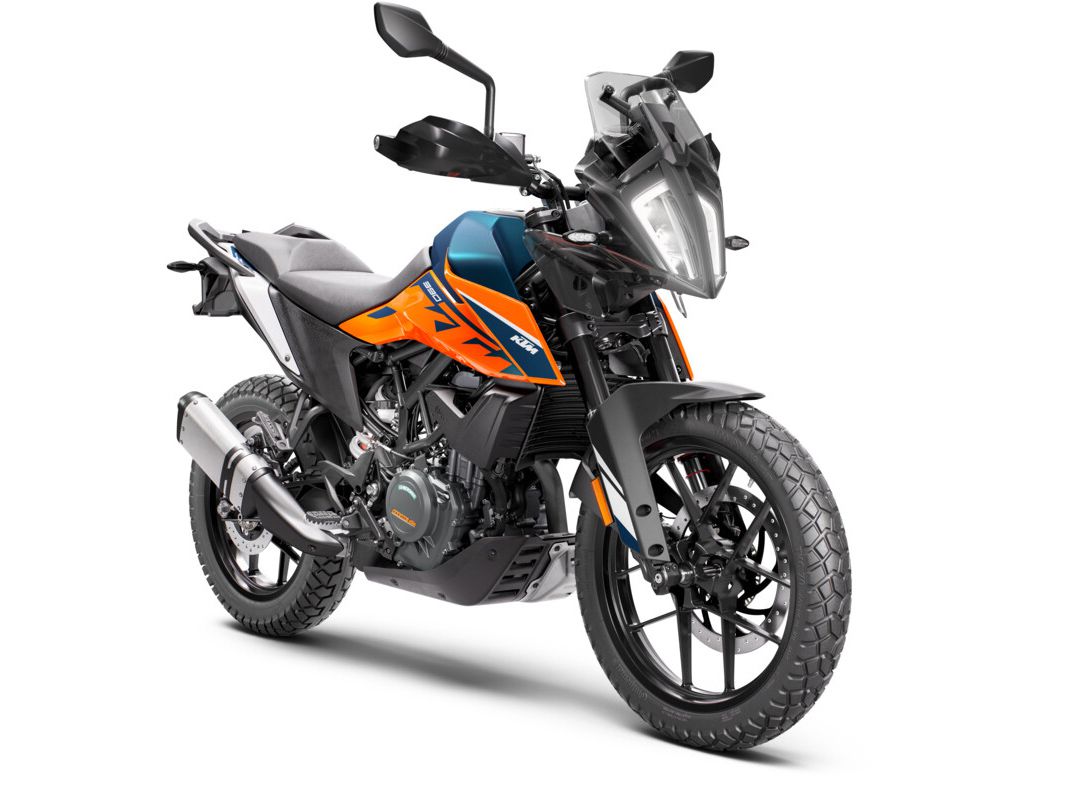
Powertrain: Engine, Transmission, and Performance
The Adventure’s Euro 5–compliant 373cc single-cylinder engine is the same engine that can be found in the 390 Duke. Although motivated by a sub-400cc single, the bike has plenty of big-bike attitude, as confirmed in our first ride aboard the small ADV, where we noted, “This isn’t a beginner’s-only, low-spec and -tech affair. No, this is a motorcycle befitting KTM’s Adventure badge.”
This liquid-cooled single doles out 37.5 hp at 8,970 rpm and 23.2 lb.-ft. at 6,990 rpm when spinning its rear wheel on our Dynojet 250i rear-wheel dyno. There’s plenty of torque for dirt or road applications, as well as ample power for the highway, although riders should expect to use the upper edge of the rpm range when running at freeway speeds. With the wind at our backs, we noted that its top speed could get over the ton and into triple digit speeds.
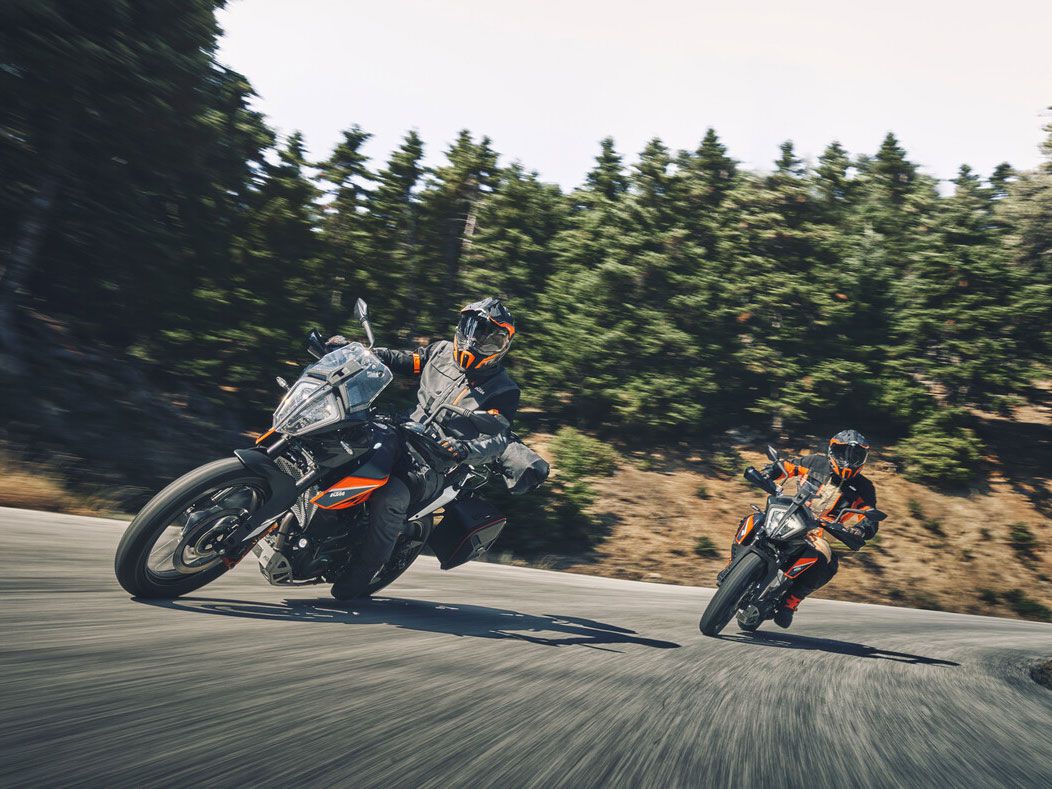
Handling
Quinn Cody, a decorated off-road racer turned KTM R&D rider, provided input on the suspension and handling of the 390 Adventure, which resulted in WP Apex suspension that exceeds expectations. Suspension is stiff enough to handle technical sections off-road, but still performs admirably on road, being planted and taut in those conditions as well. The fork is adjustable for compression and rebound, while the shock is adjustable for preload and rebound.
The bike falls into turns with ease thanks in part to a 56.3-inch wheelbase and lightweight packaging. If traction gets dicey, lean-angle-sensitive TC is there to help. In addition to the Street ride mode, the electronics suite now comes with Offroad mode to suit off-the-beaten-path riding. As previously noted, “The 390 Adventure can handle any terrain put before it as long as you attack it at the proper speed.”
Brakes
Braking performance from Brembo’s budget-conscious ByBre units is excellent. The front radial-mounted four-piston caliper holds fast to a large 320mm disc and a two-piston floating unit grabs onto a 230mm disc. Cornering ABS can be turned off, while the Offroad mode completely deactivates the antilock braking system at the rear and reduces intervention at the front.
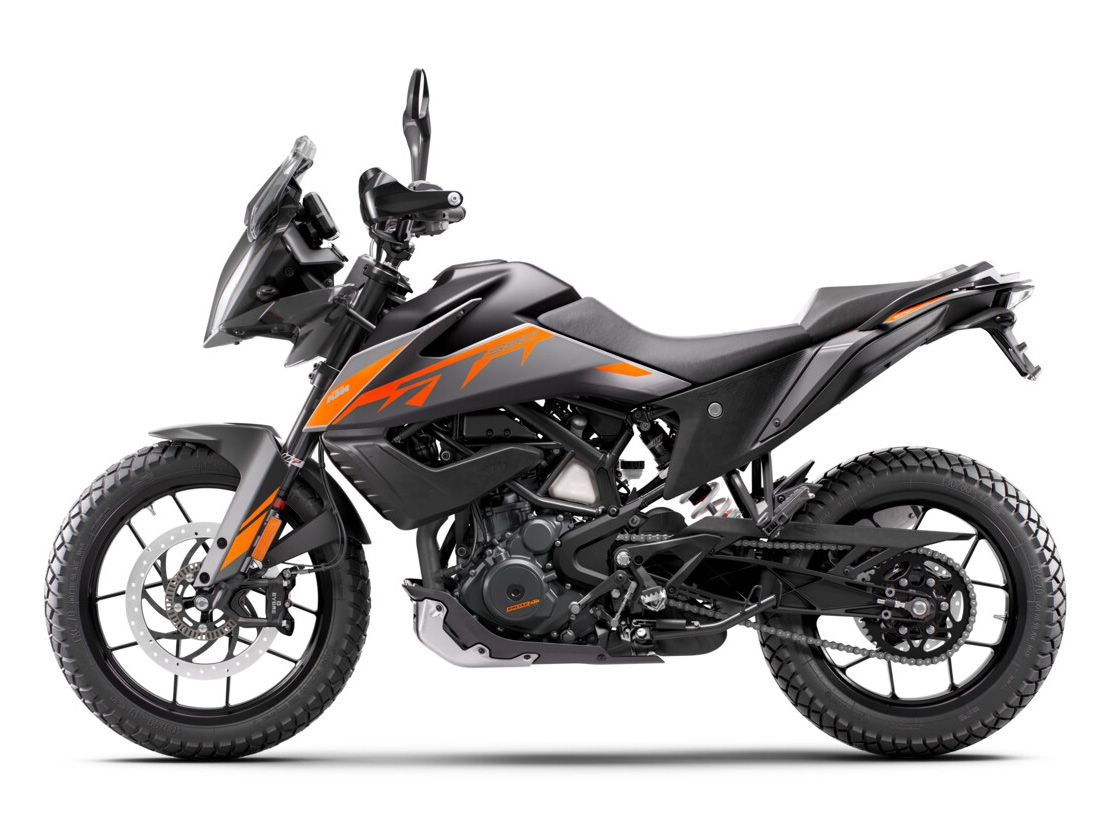
Fuel Economy and Real-World MPG
KTM claims fuel economy of 100 km/3.37 liters (about 62 miles/0.9 gallon).
Ergonomics: Comfort and Utility
The fanned-out two-piece seat is well suited for longer jaunts; the reach to bar and peg are plenty spacious and comfortable. There’s ample room for moving around the saddle. The seat height is somewhat tall at 33.7 inches.
An impressive 7.9 inches of ground clearance gives the 390 Adventure a nice buffer between hard parts and rough topography. The stubby windscreen offers some wind protection and does not intrude into the rider’s line of sight.
Electronics
Despite being a smaller, budget-friendly bike, KTM loaded the 390 Adventure with an impressive electronics suite that enables it to excel regardless of conditions. Offroad mode allows some rear-wheel slip for adverse conditions, and maintains its settings in the event of a stalled engine; Offroad ABS balances traction without overregulating brake control on a trail; and KTM’s Motorcycle Traction Control system is lean-angle sensitive.
The rider interface includes a 5-inch full-color TFT display that can be connected to the KTM My Ride app for phone pairing. LED lighting throughout is a nice touch that adds to safety and conspicuity.
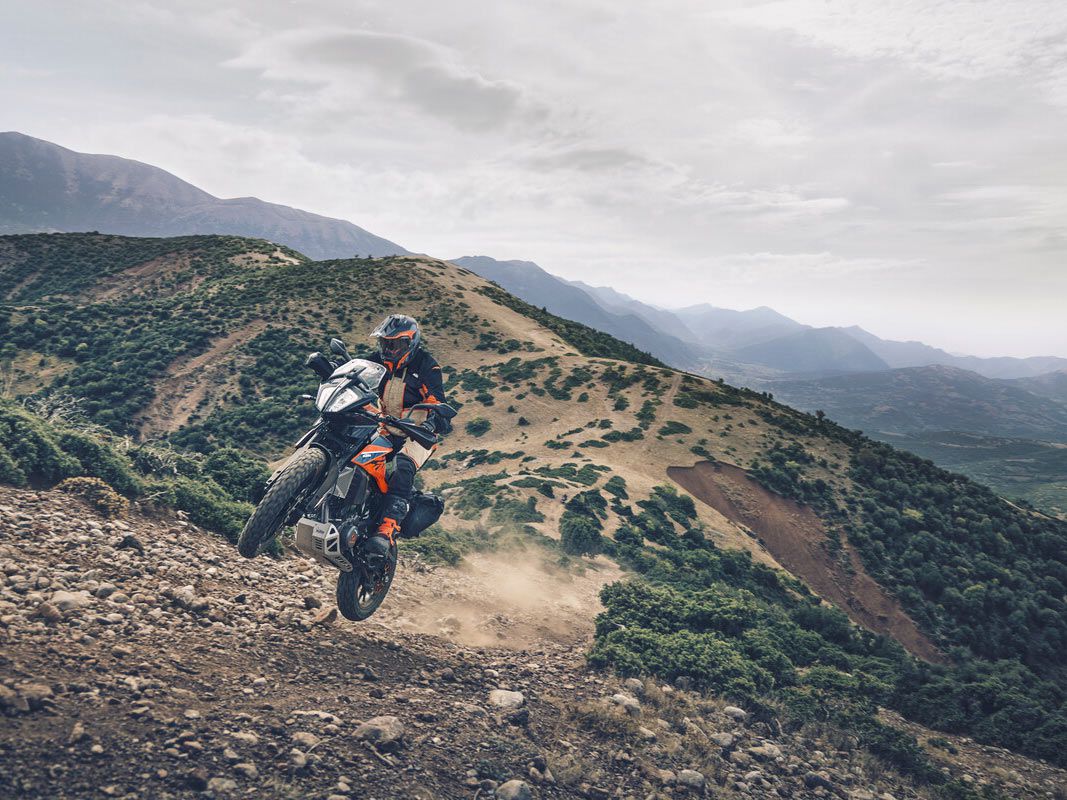
Warranty and Maintenance Coverage
KTM offers a 24-month/24,000-mile warranty for the 390 Adventure. The warranty can be transferred to subsequent owners within the stated warranty period.
Quality
The switch gear is a little less refined than on KTM’s big bikes, but there are nice touches carried down from the 790 Adventure, like a full-color display that’s easy to read at a glance.
2022 KTM 390 Adventure Claimed Specifications
| MSRP: | $6,799 |
| Engine: | 373cc, DOHC, liquid-cooled single |
| Bore x Stroke: | 89.0 x 60.0mm |
| Transmission/Final Drive: | 6-speed/chain |
| Cycle World Measured Horsepower: | 37.5 hp @ 8,970 rpm |
| Cycle World Measured Torque: | 23.2 lb.-ft. @ 6,990 rpm |
| Fuel Delivery: | Bosch EFI w/ 46mm throttle body; ride-by-wire |
| Clutch: | PASC slipper; mechanically operated |
| Engine Management/Ignition: | N/A |
| Frame: | Steel trellis |
| Front Suspension: | 43mm WP Apex fork, compression and rebound damping adjustable; 6.7 in. travel |
| Rear Suspension: | WP Apex monoshock, spring preload and rebound damping adjustable; 7.0 in. travel |
| Front Brake: | ByBre radial-mount 4-piston caliper, 320mm disc w/ ABS |
| Rear Brake: | ByBre 2-piston floating caliper, 230mm disc w/ ABS |
| Wheels, Front/Rear: | Cast wheels; 19 x 2.5 in. / 17 x 3.5 in. |
| Tires, Front/Rear: | Continental TKC 70; 100/90-19 / 130/80-17 |
| Rake/Trail: | 26.5° / N/A |
| Wheelbase: | 56.3 in. |
| Ground Clearance: | 7.9 in. |
| Seat Height: | 33.7 in. |
| Fuel Capacity: | 3.8 gal. |
| Cycle World Measured Wet Weight: | 387 lb. |
| Contact: | ktm.com |
Source: MotorCyclistOnline.com

